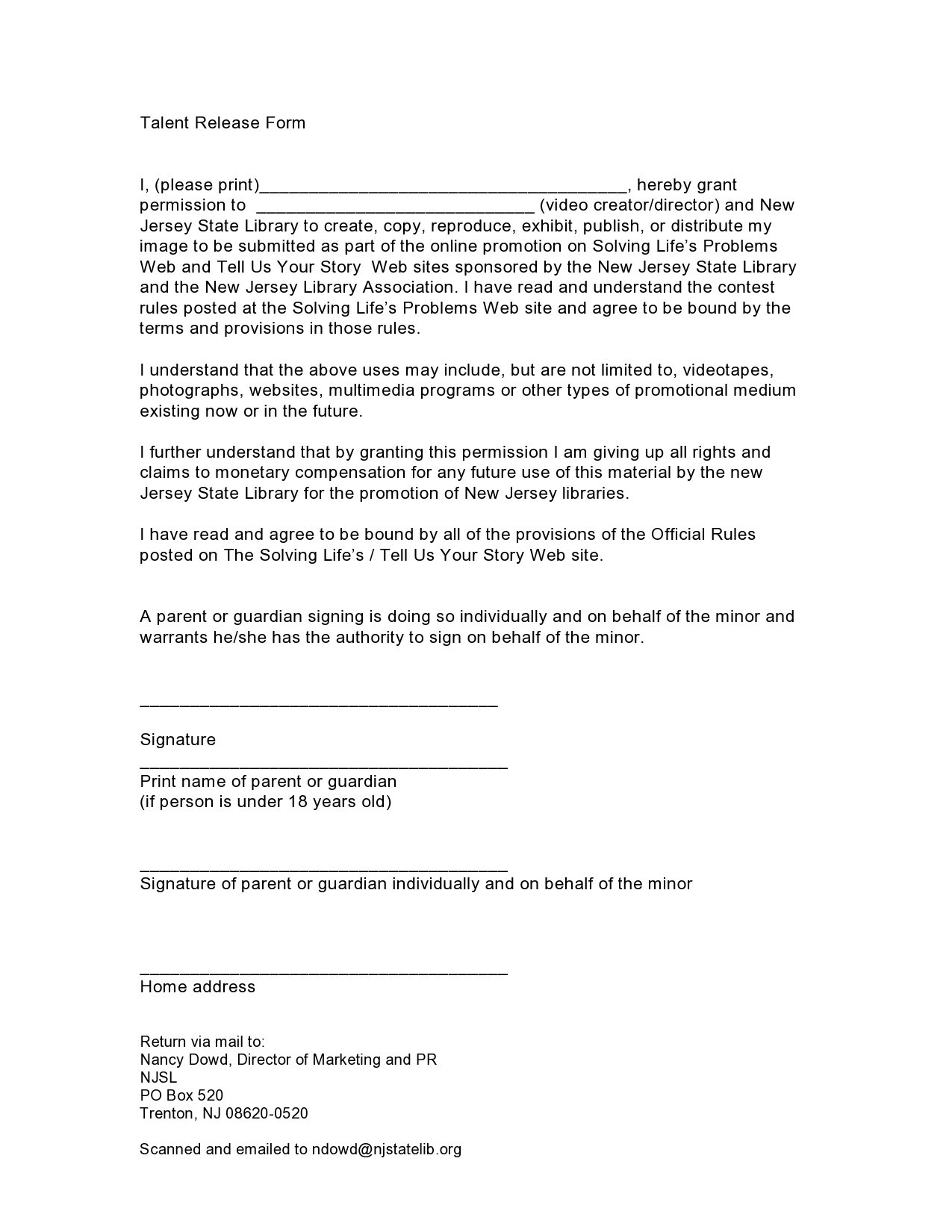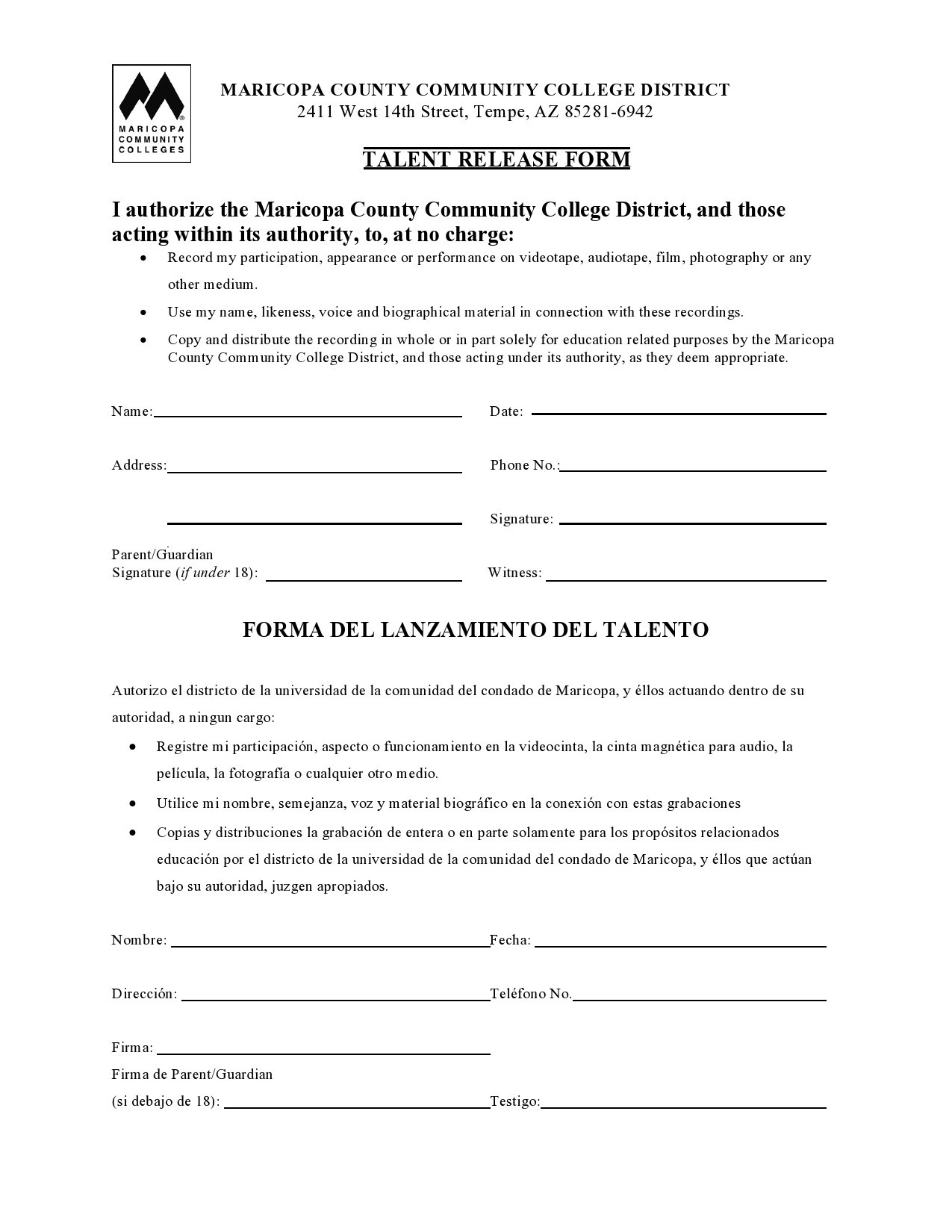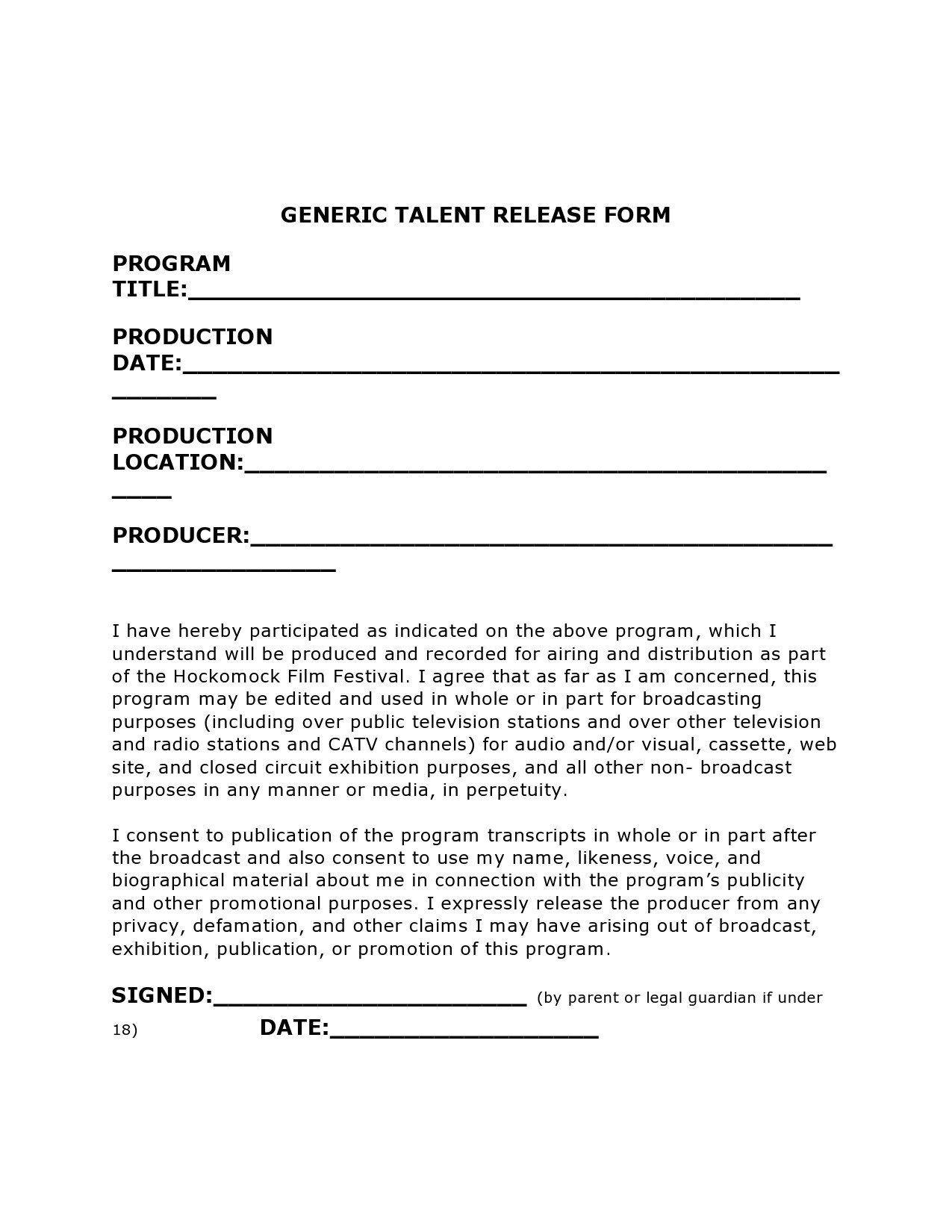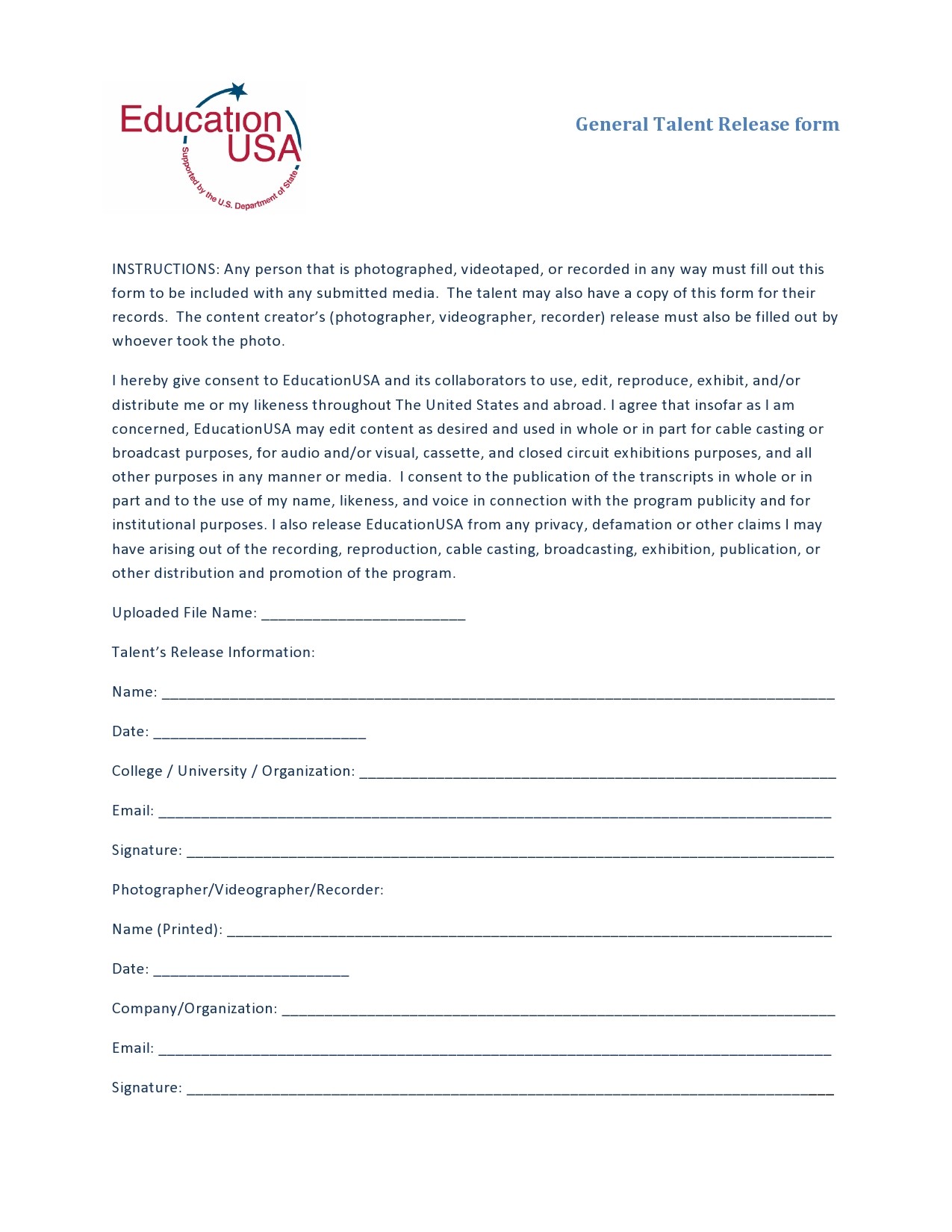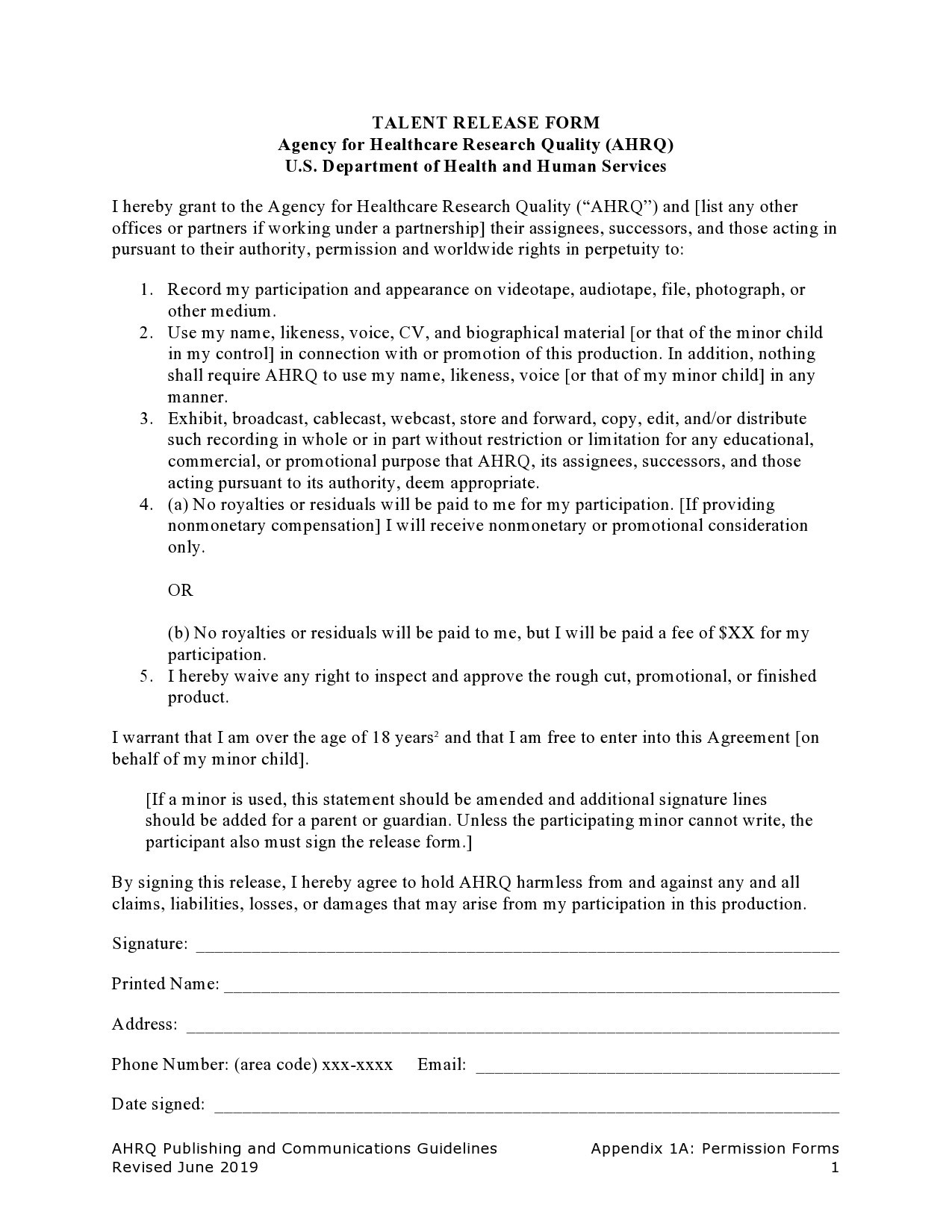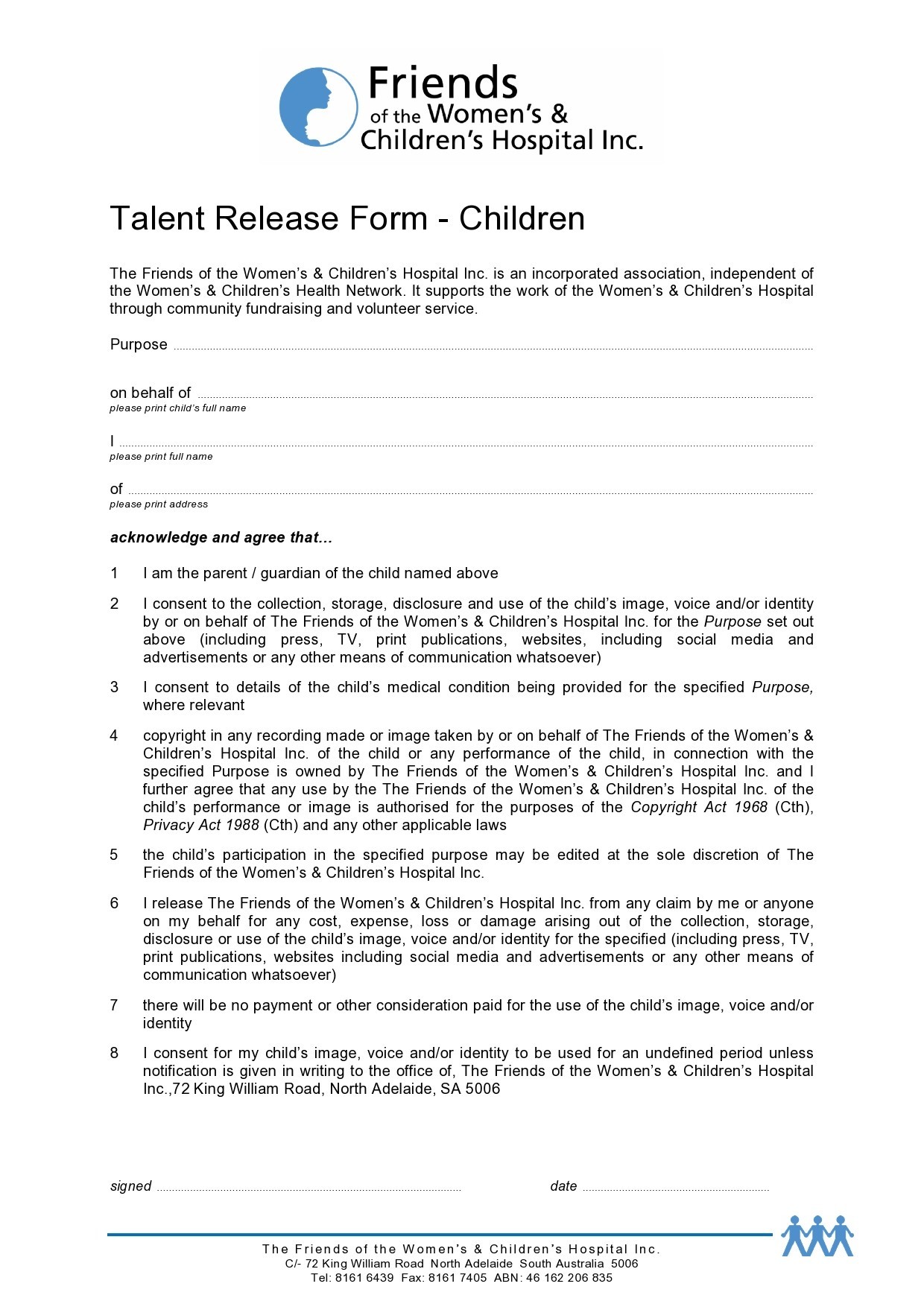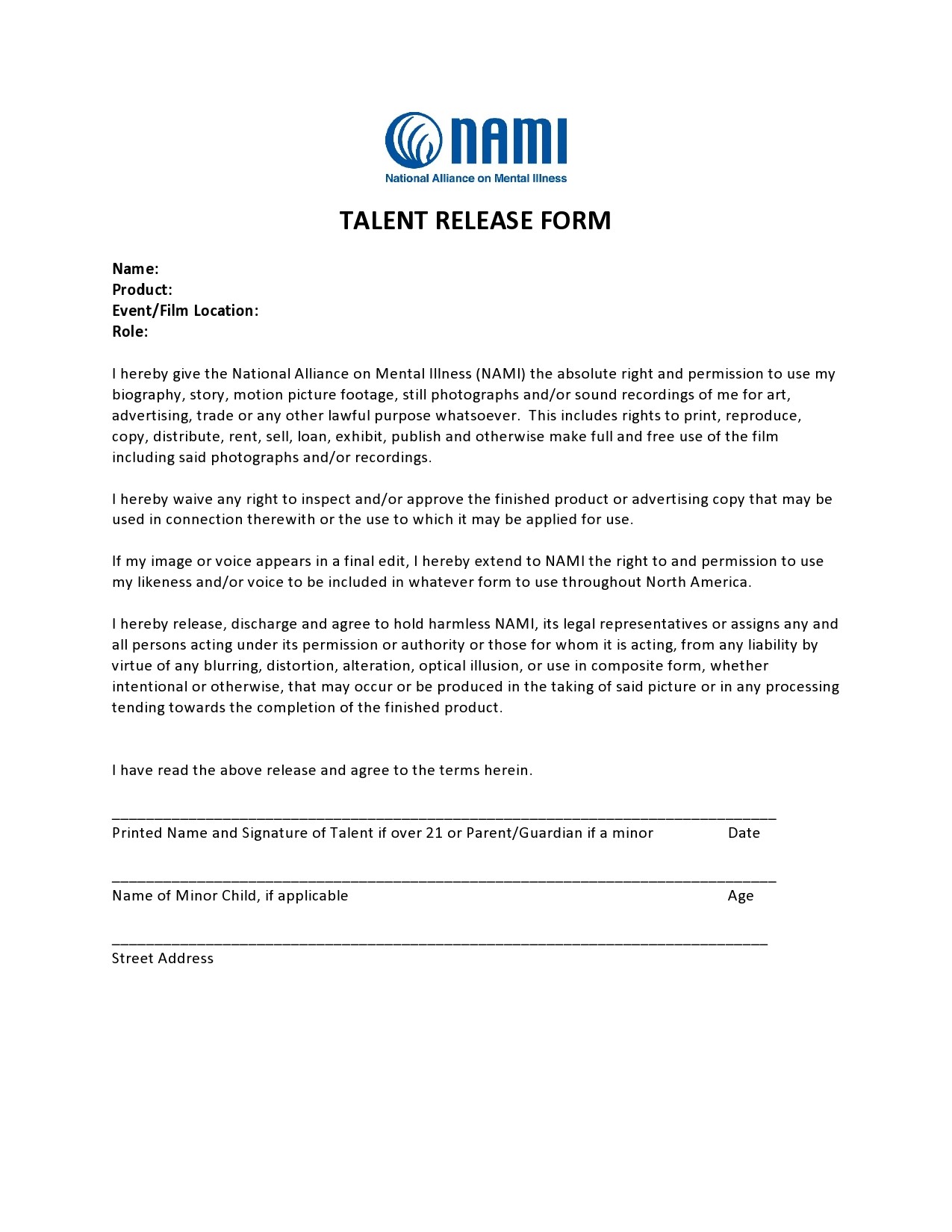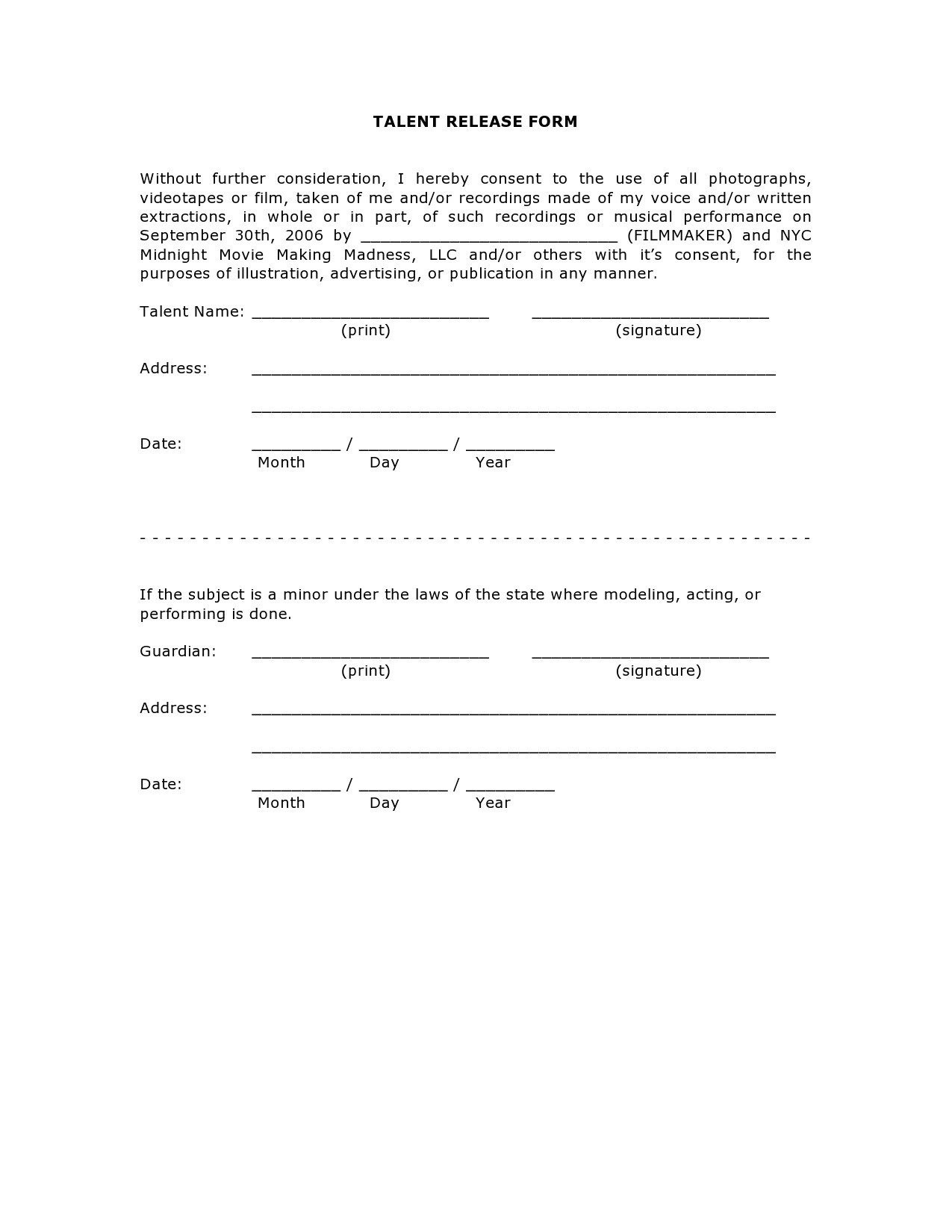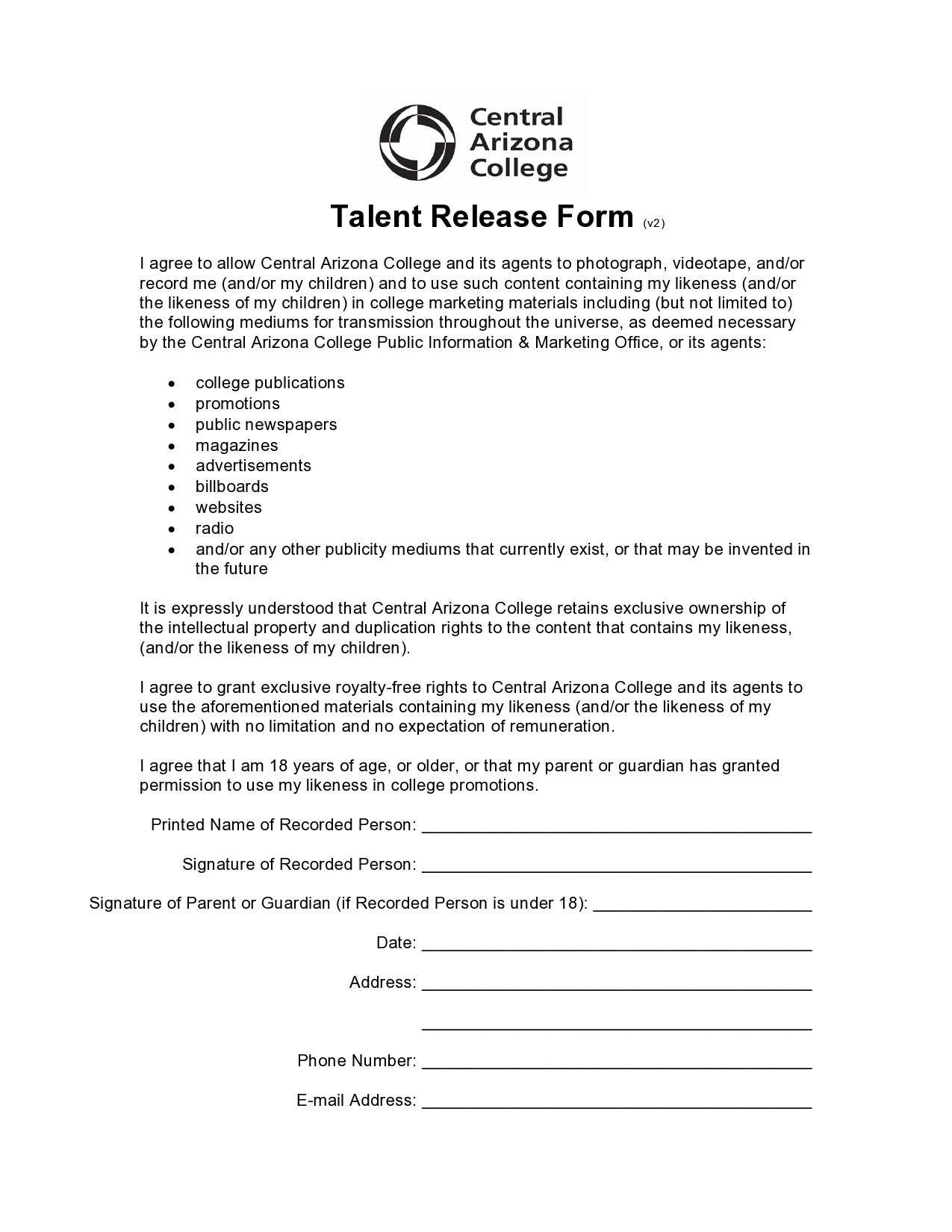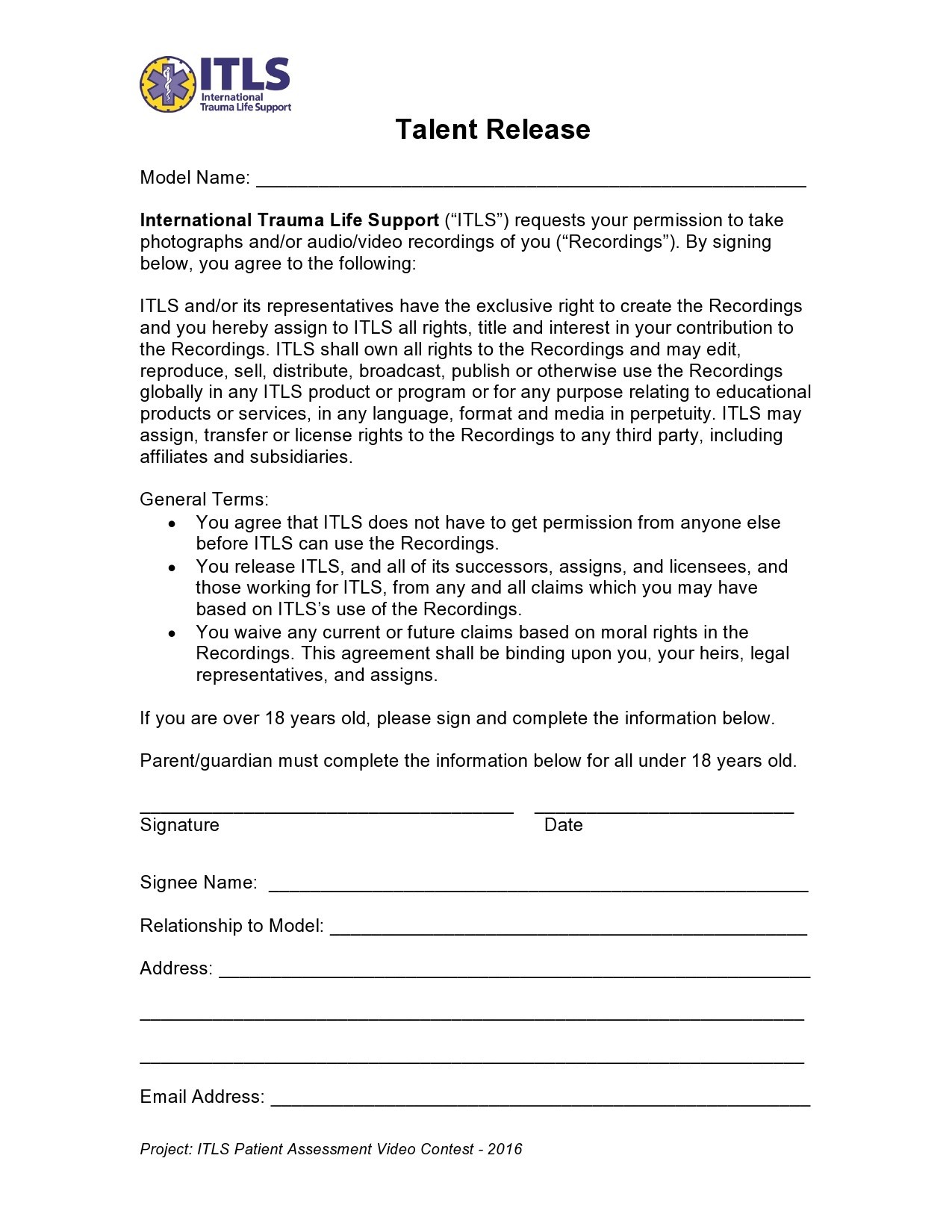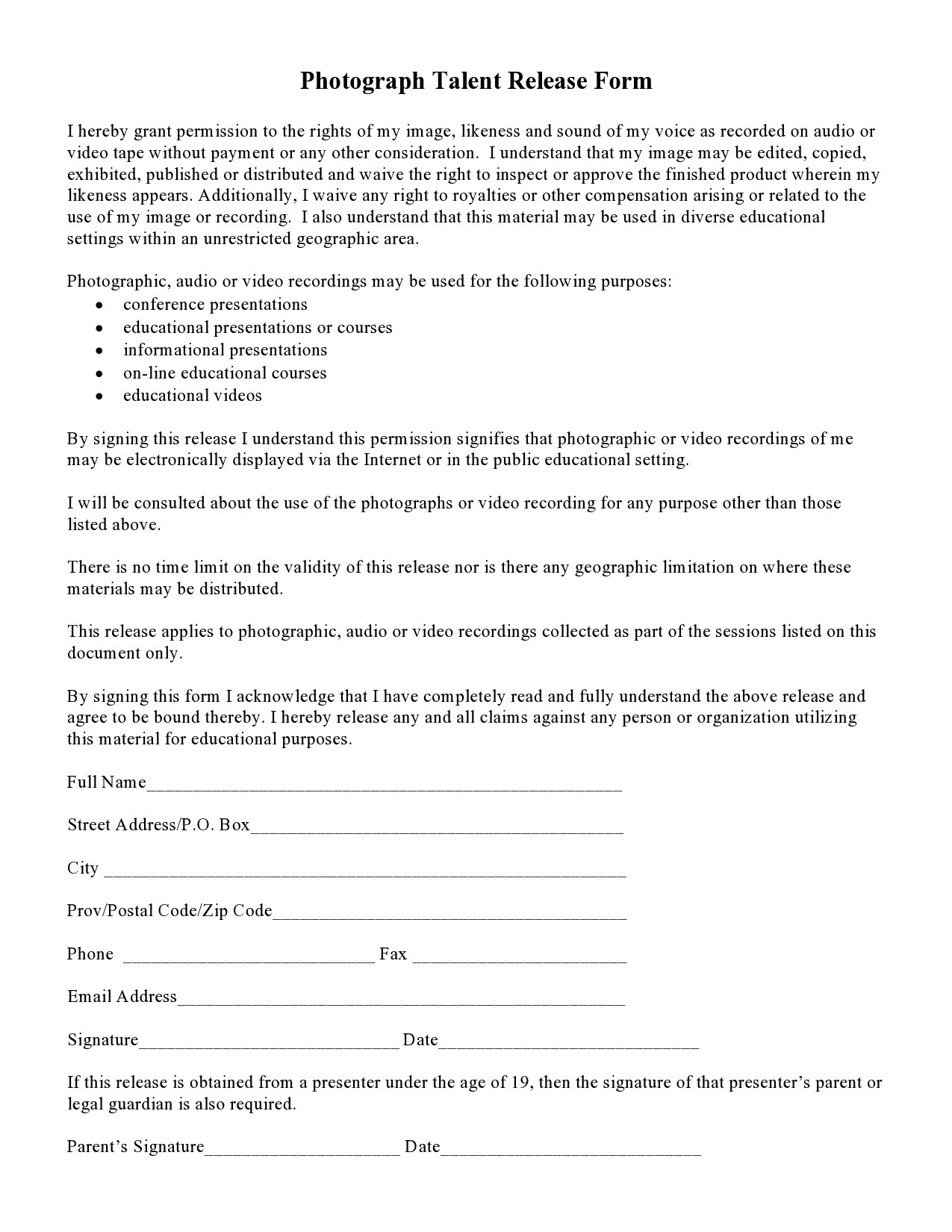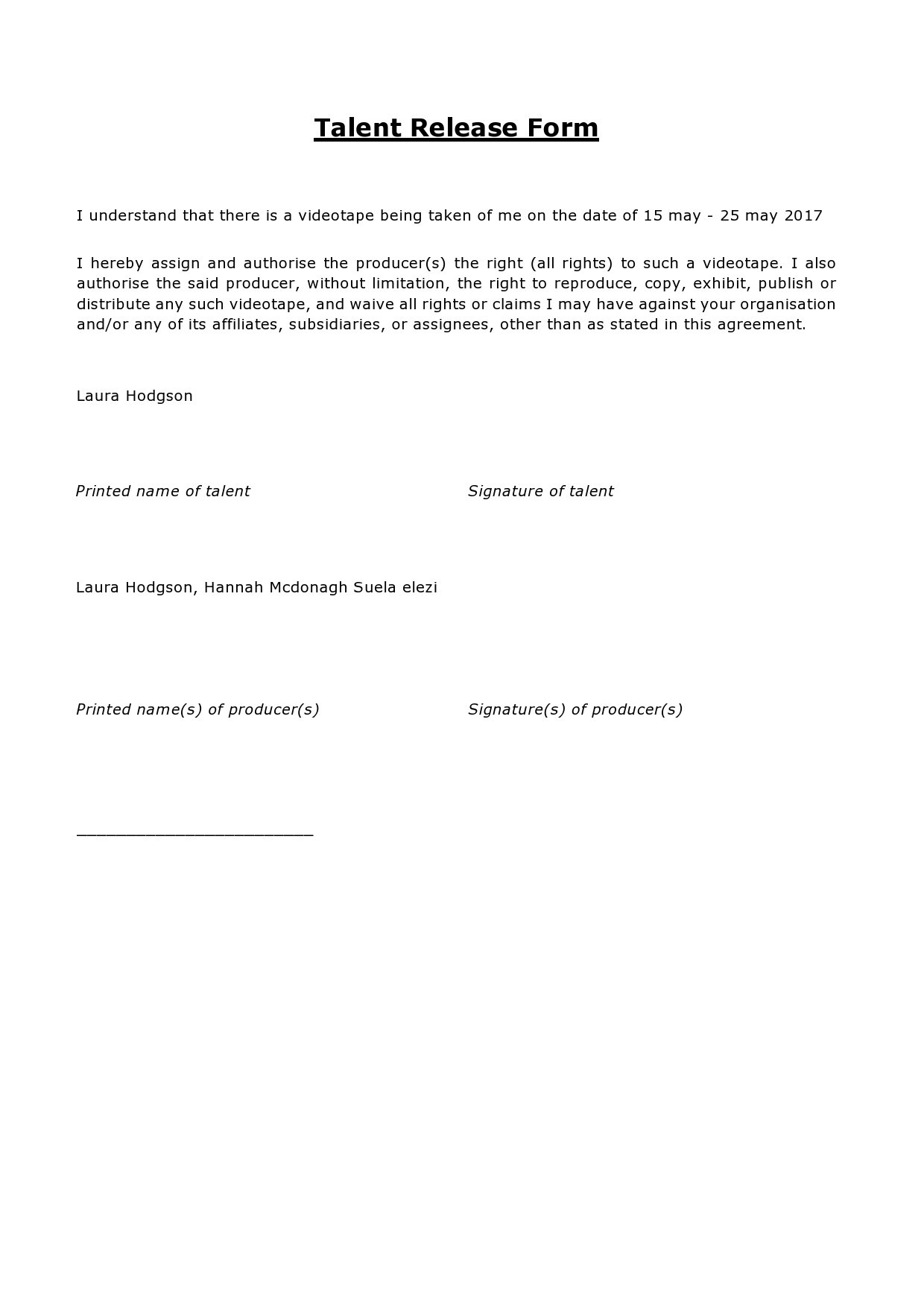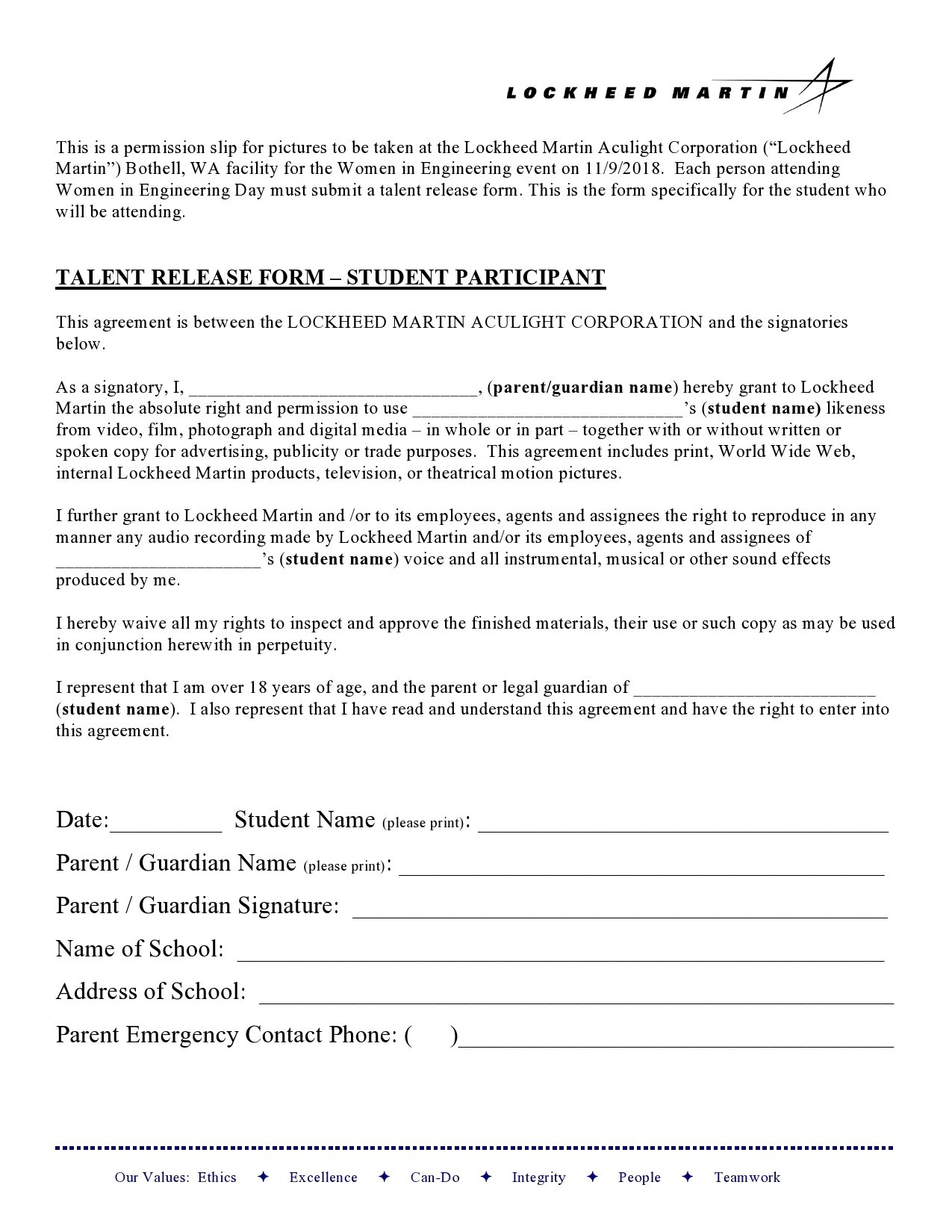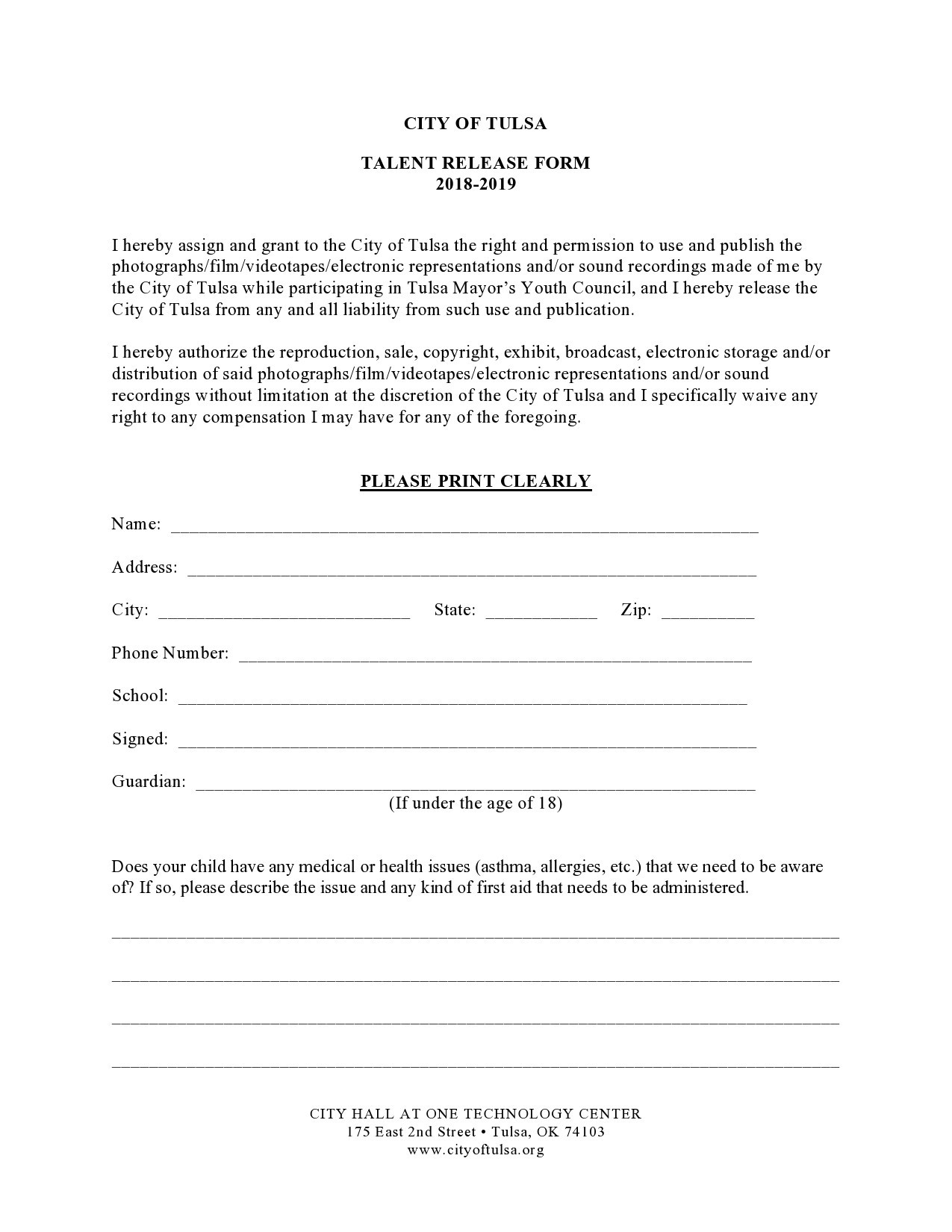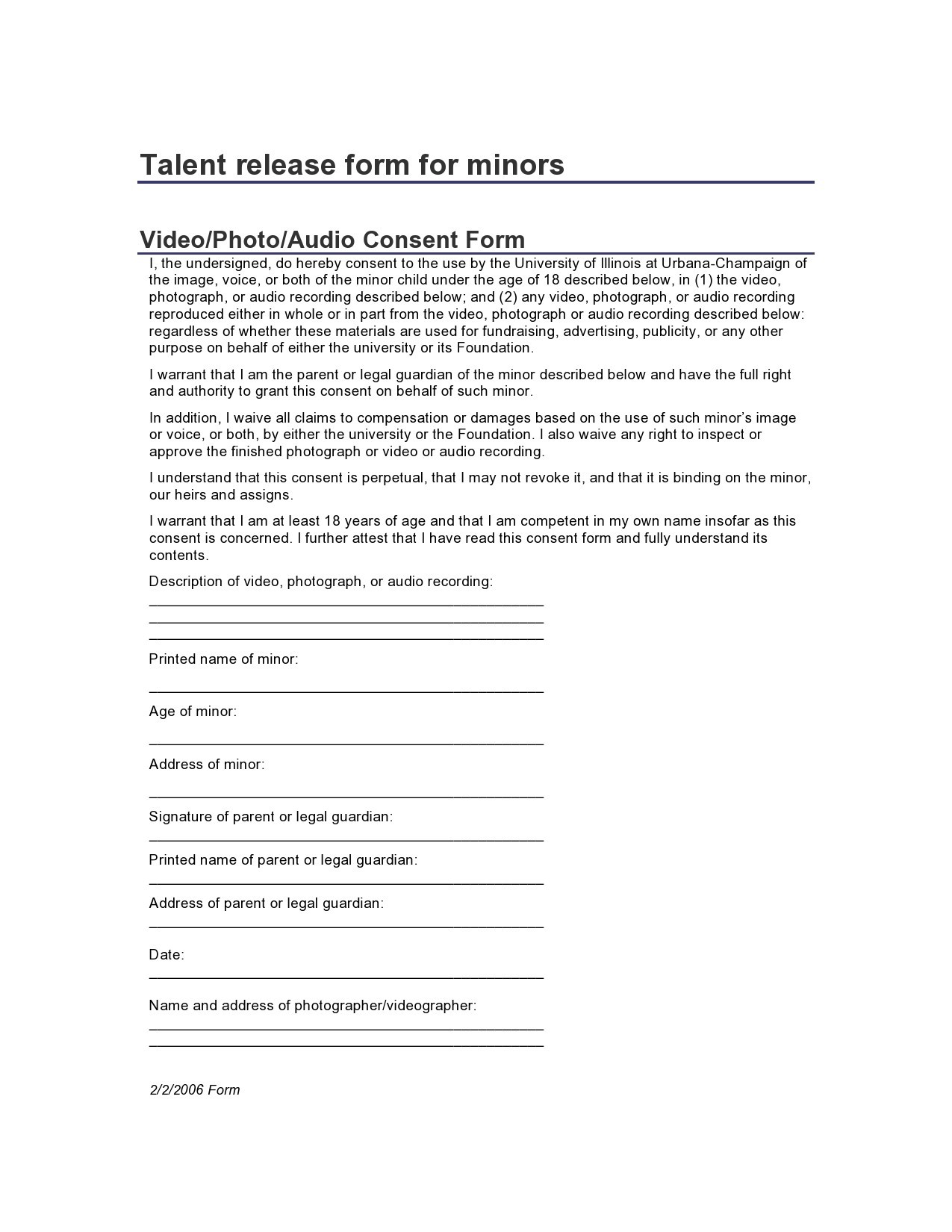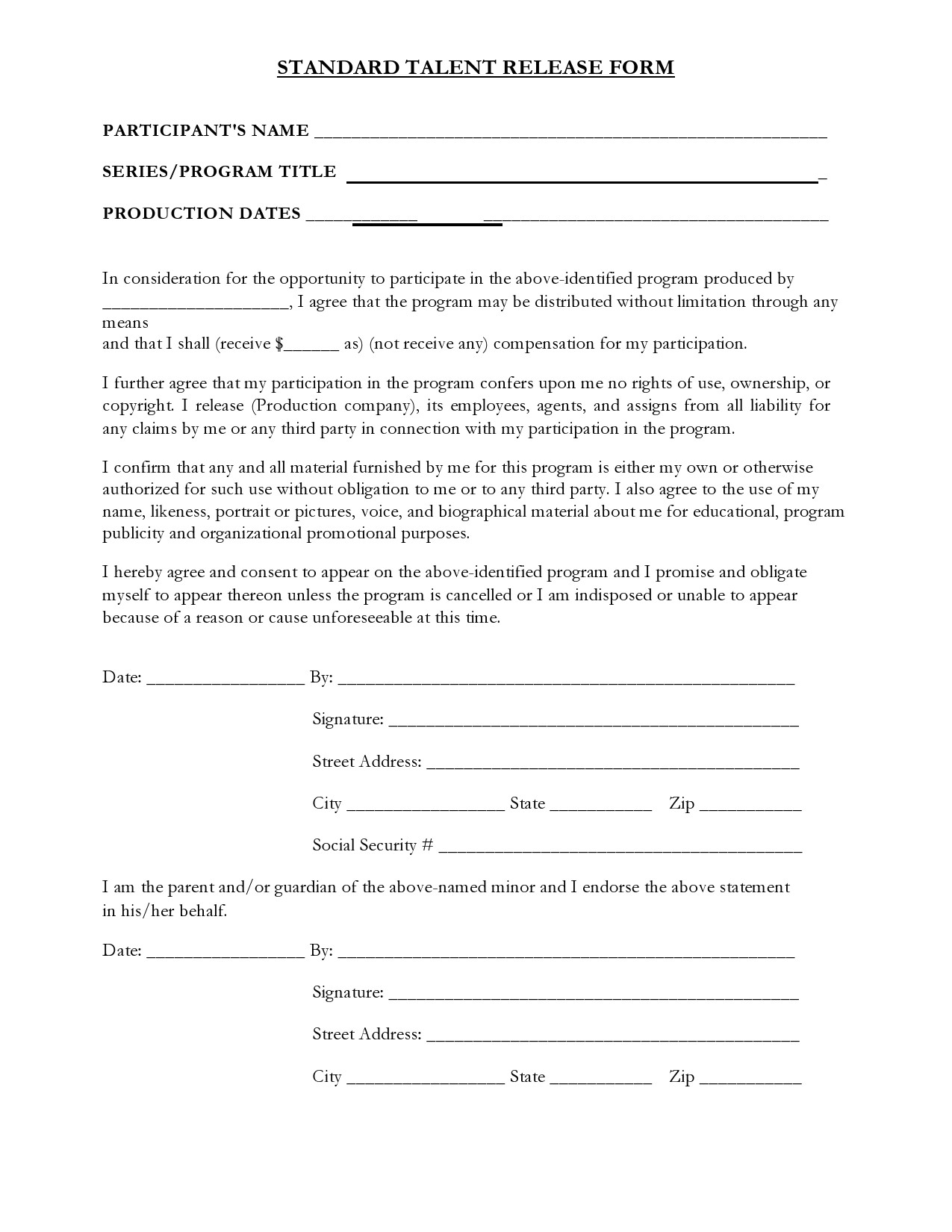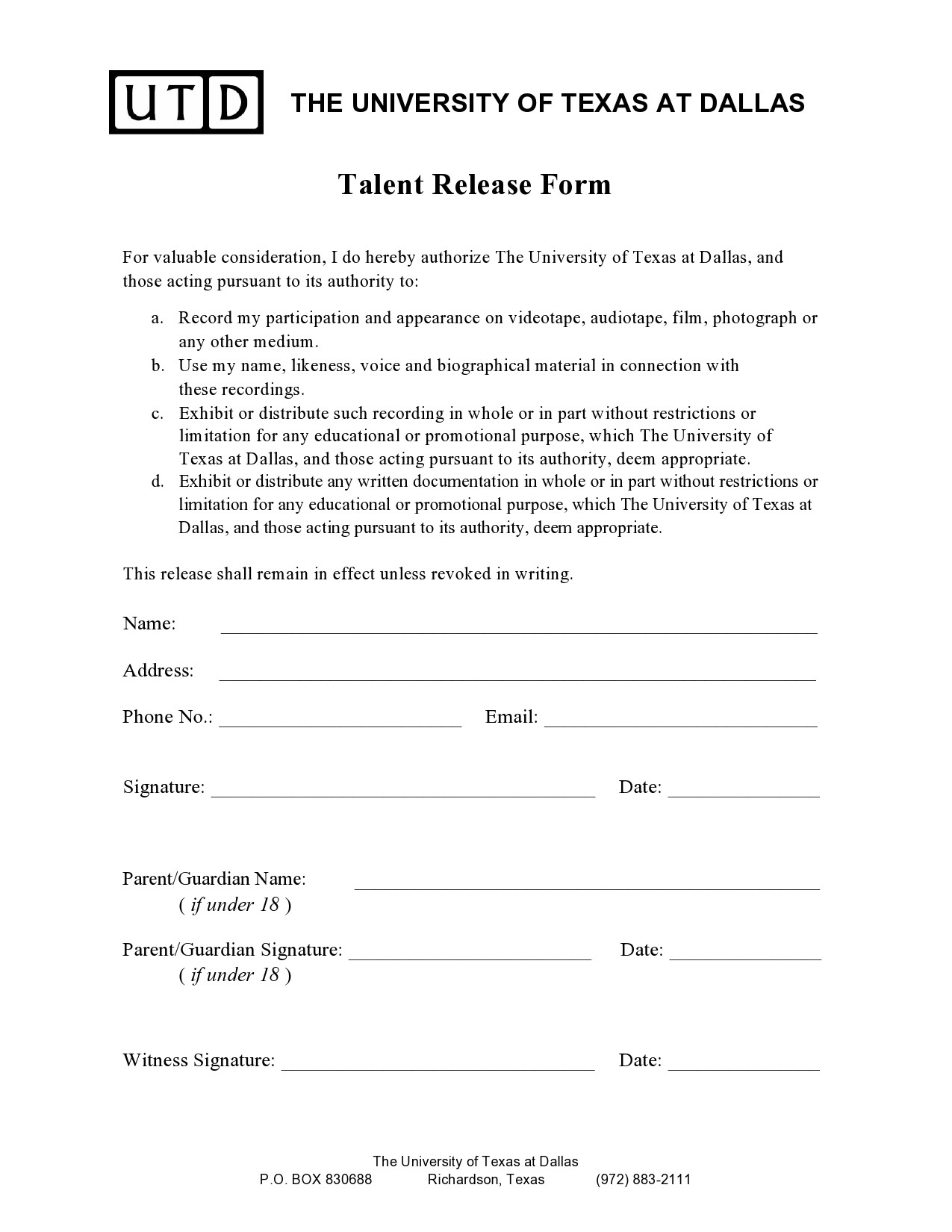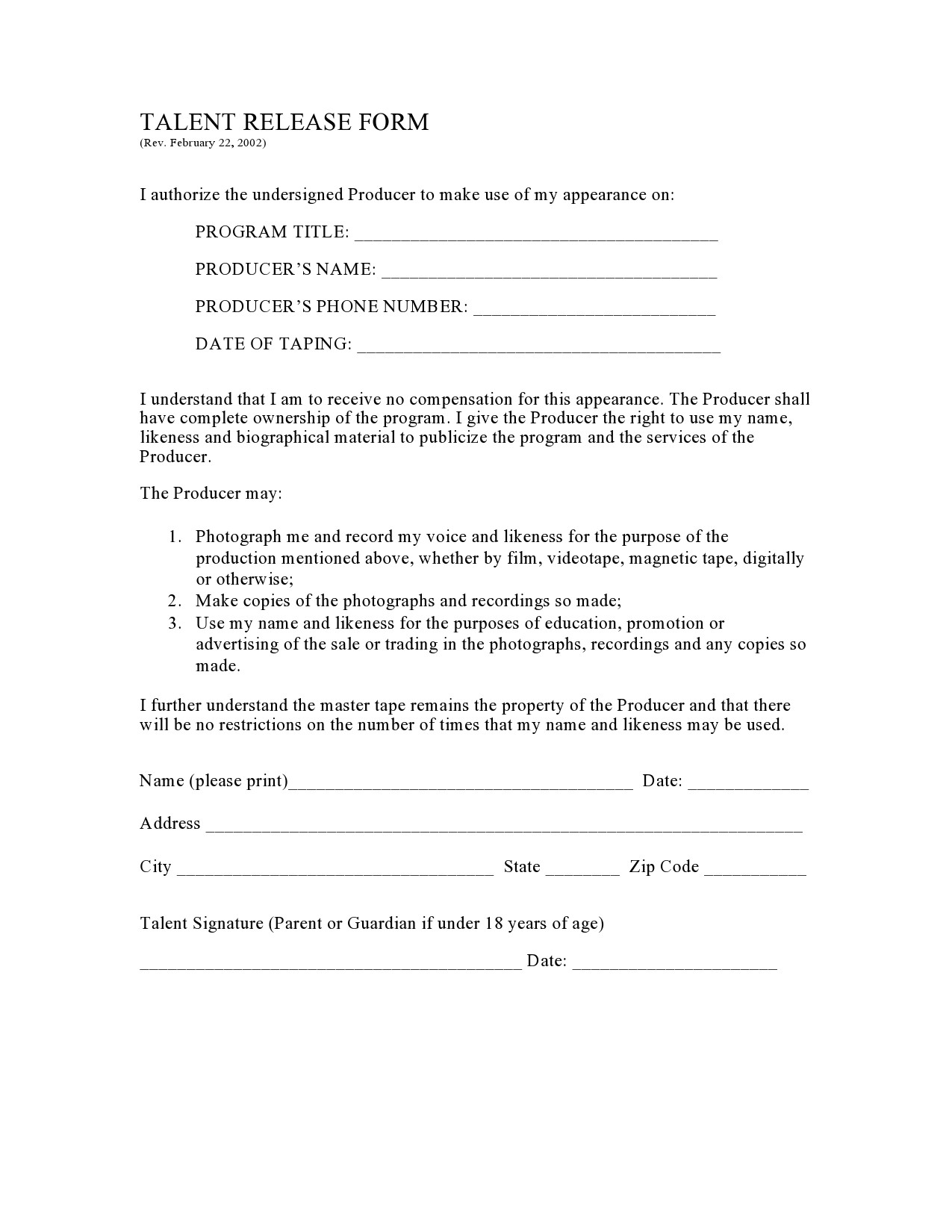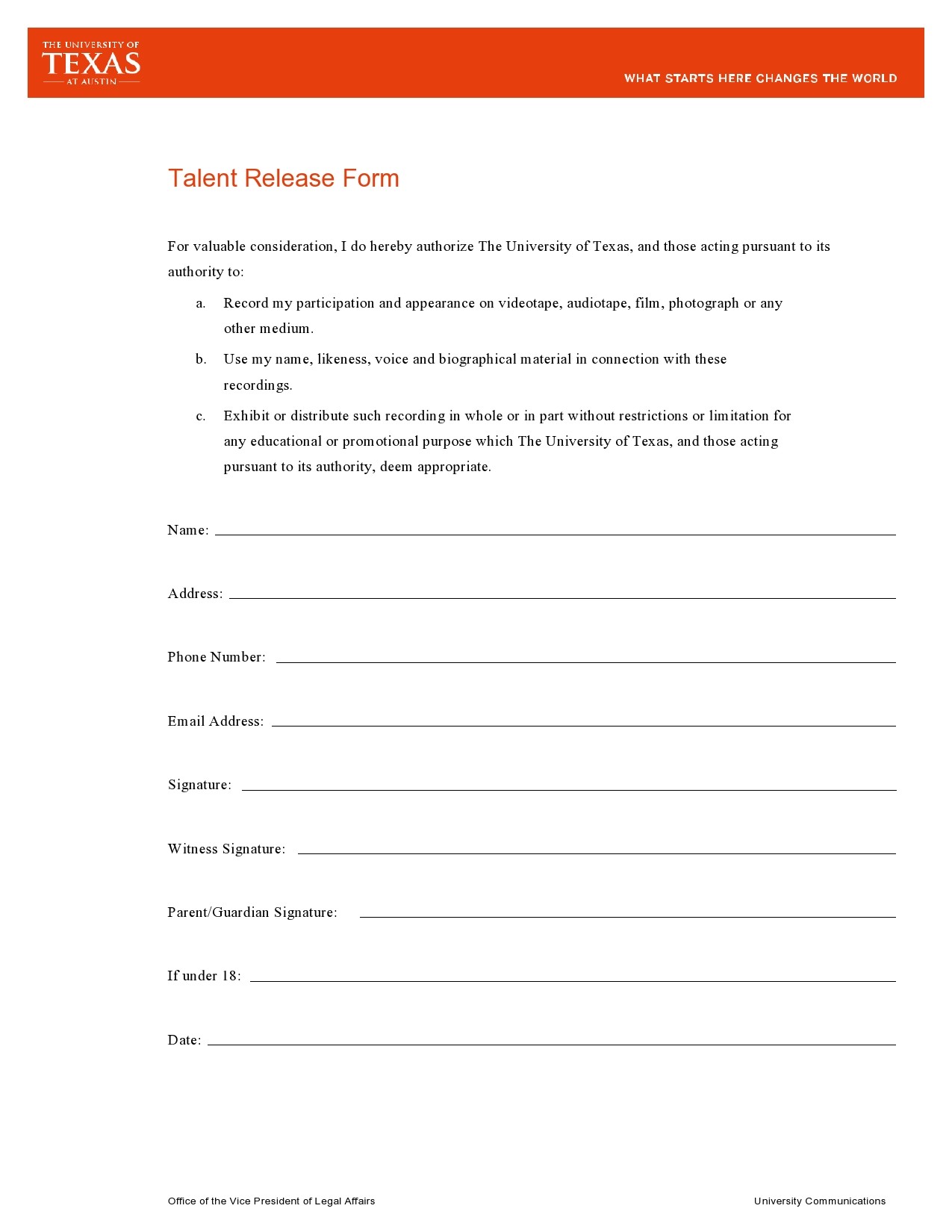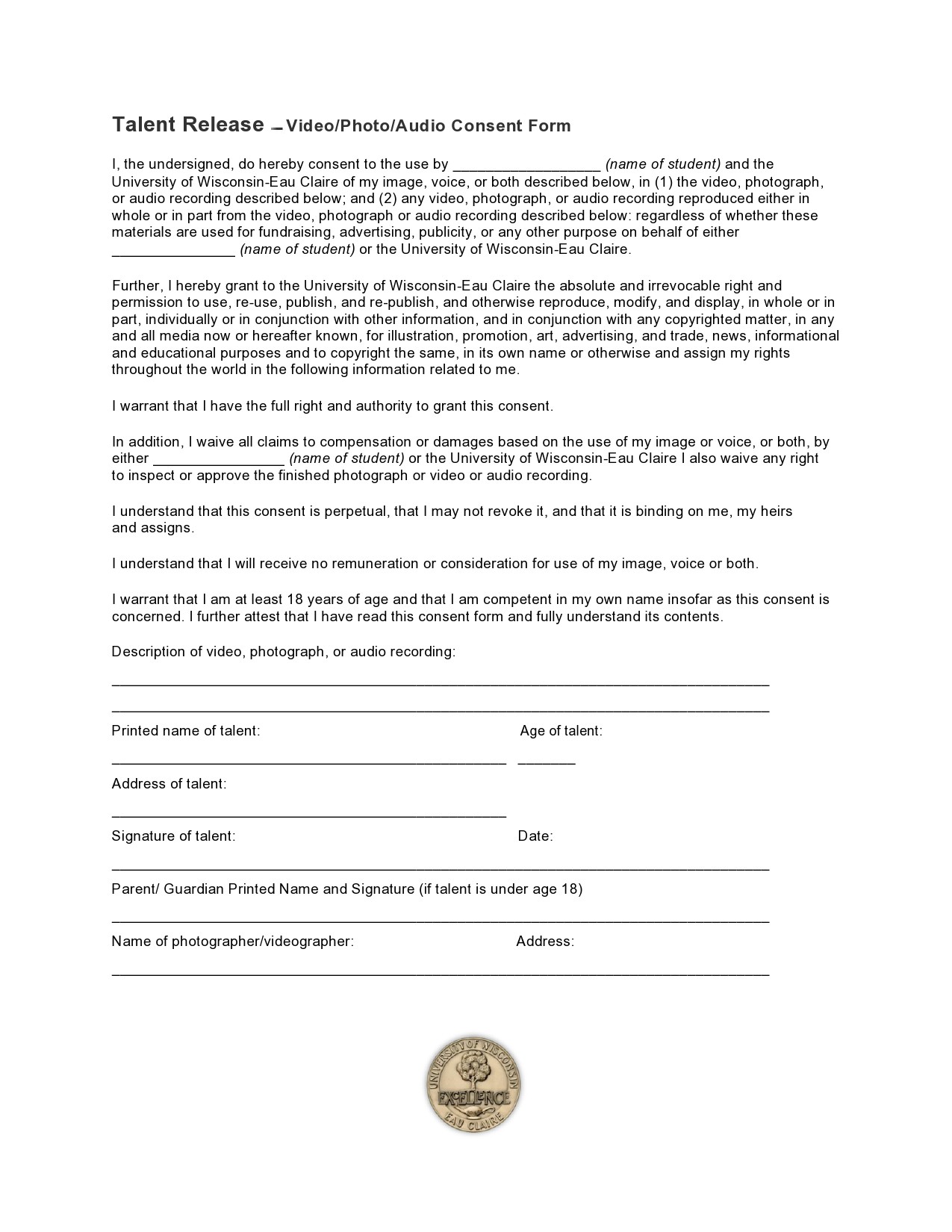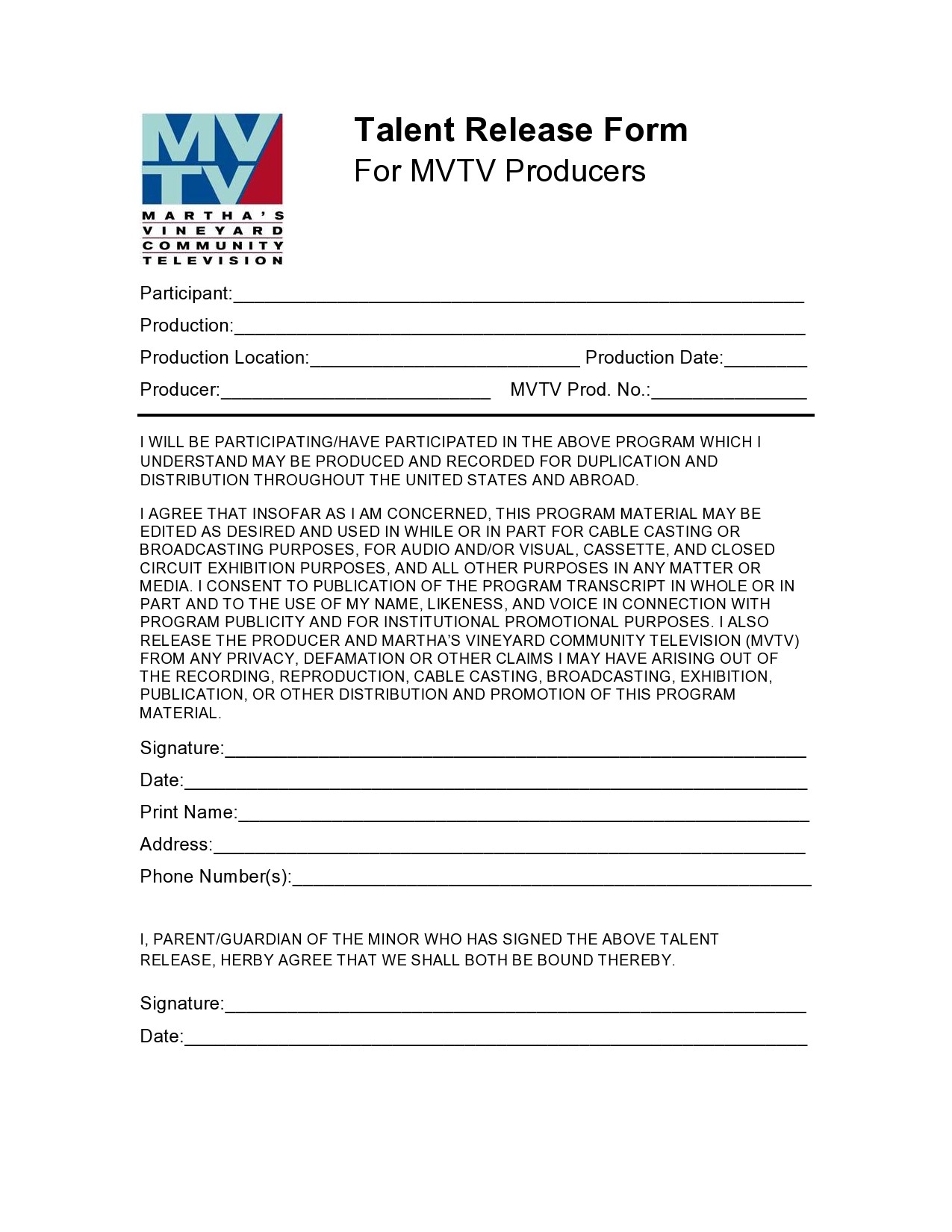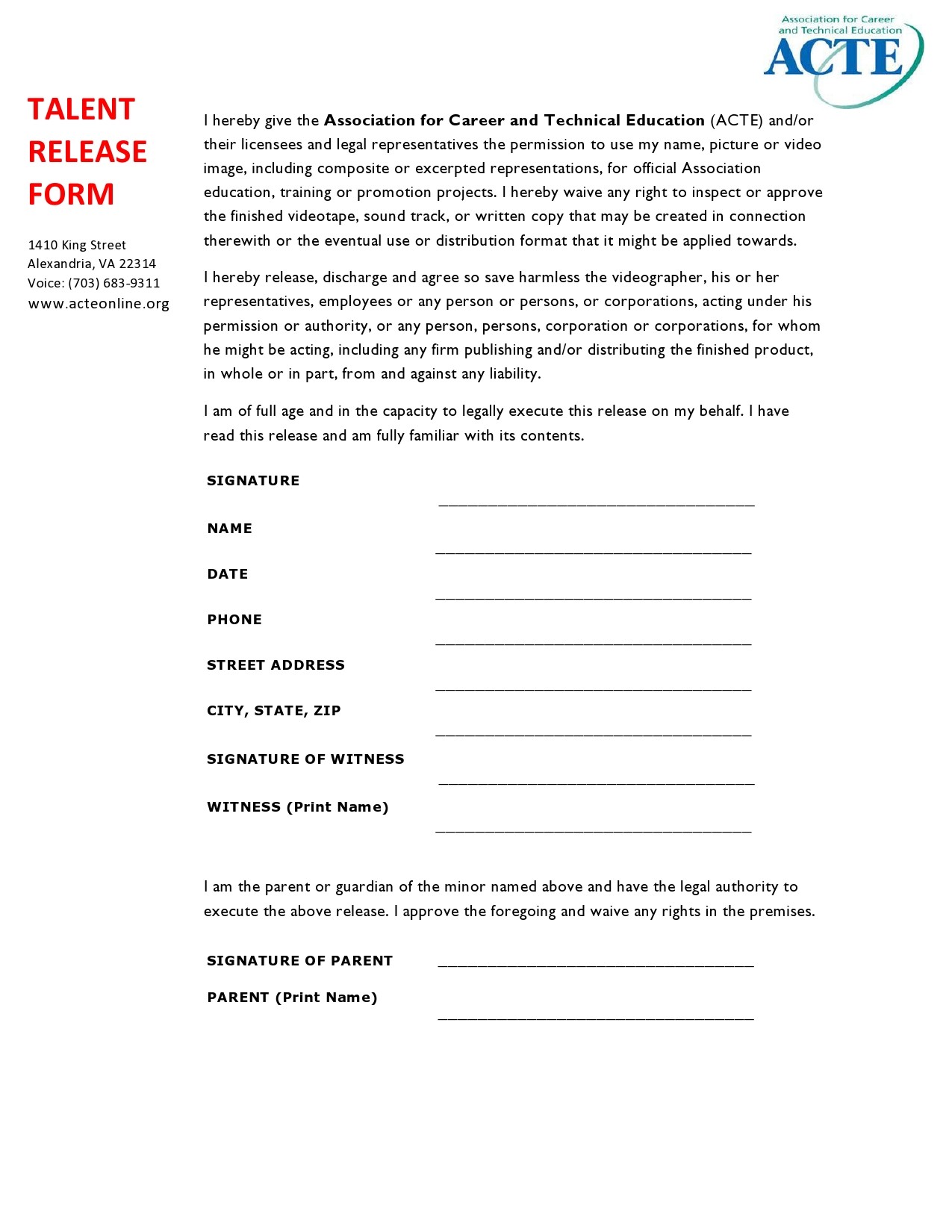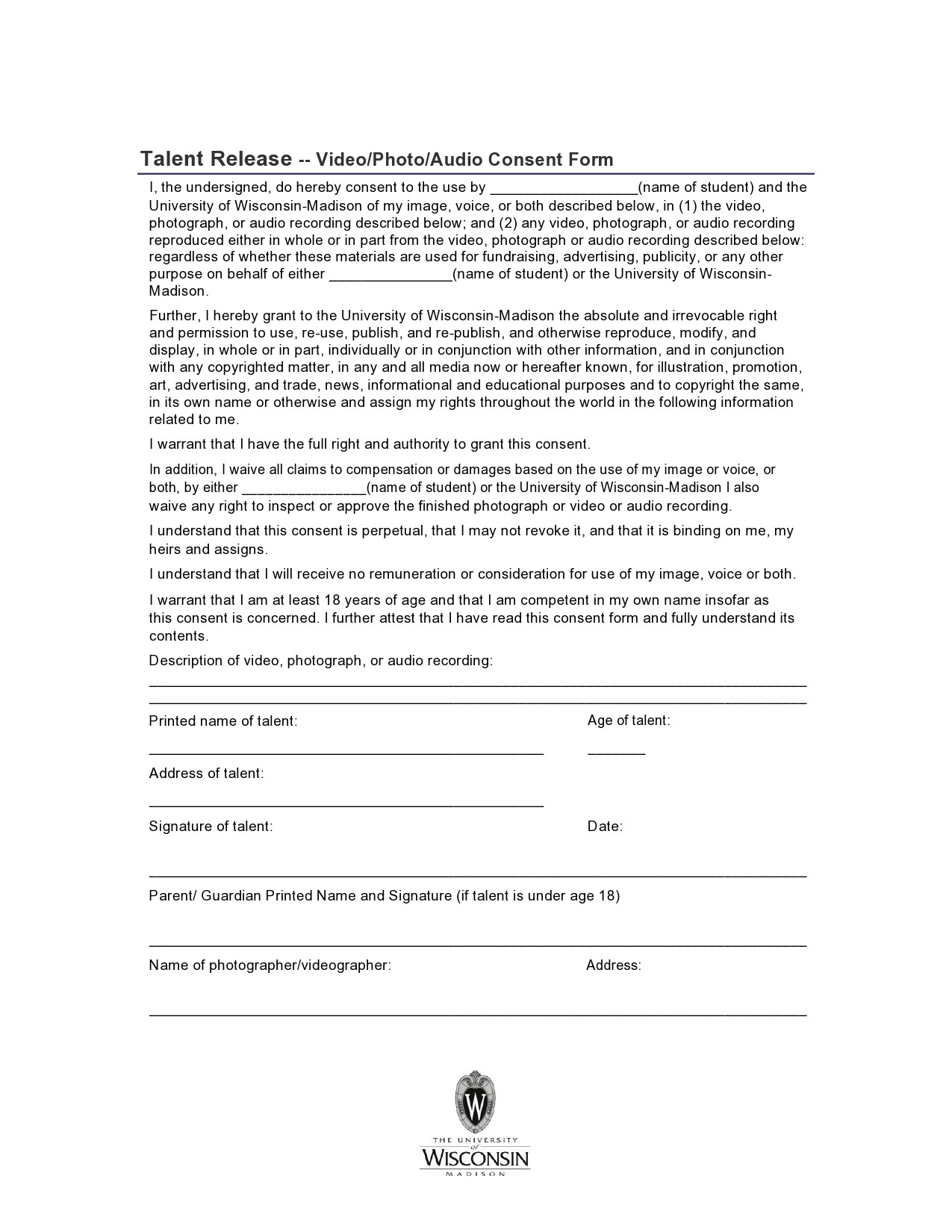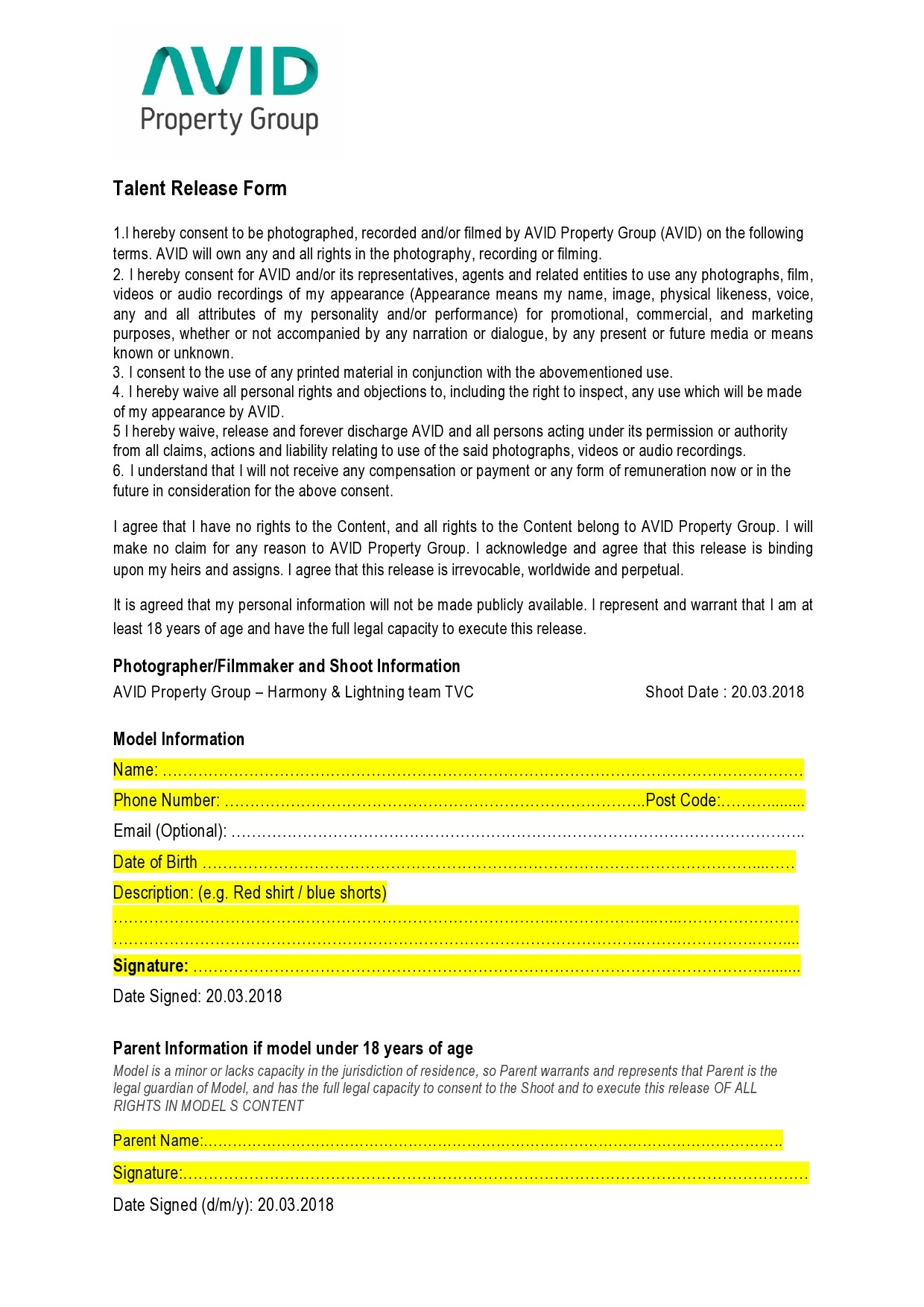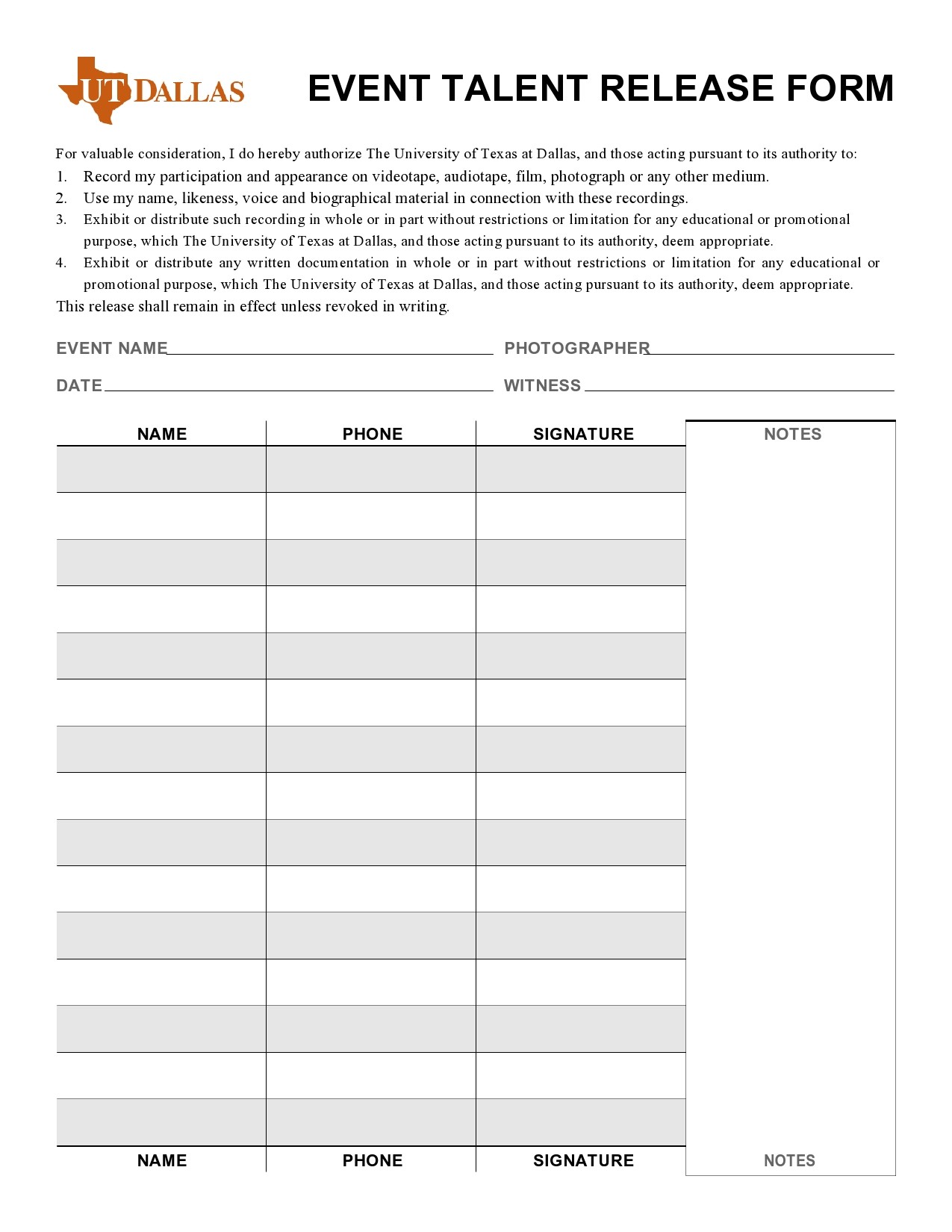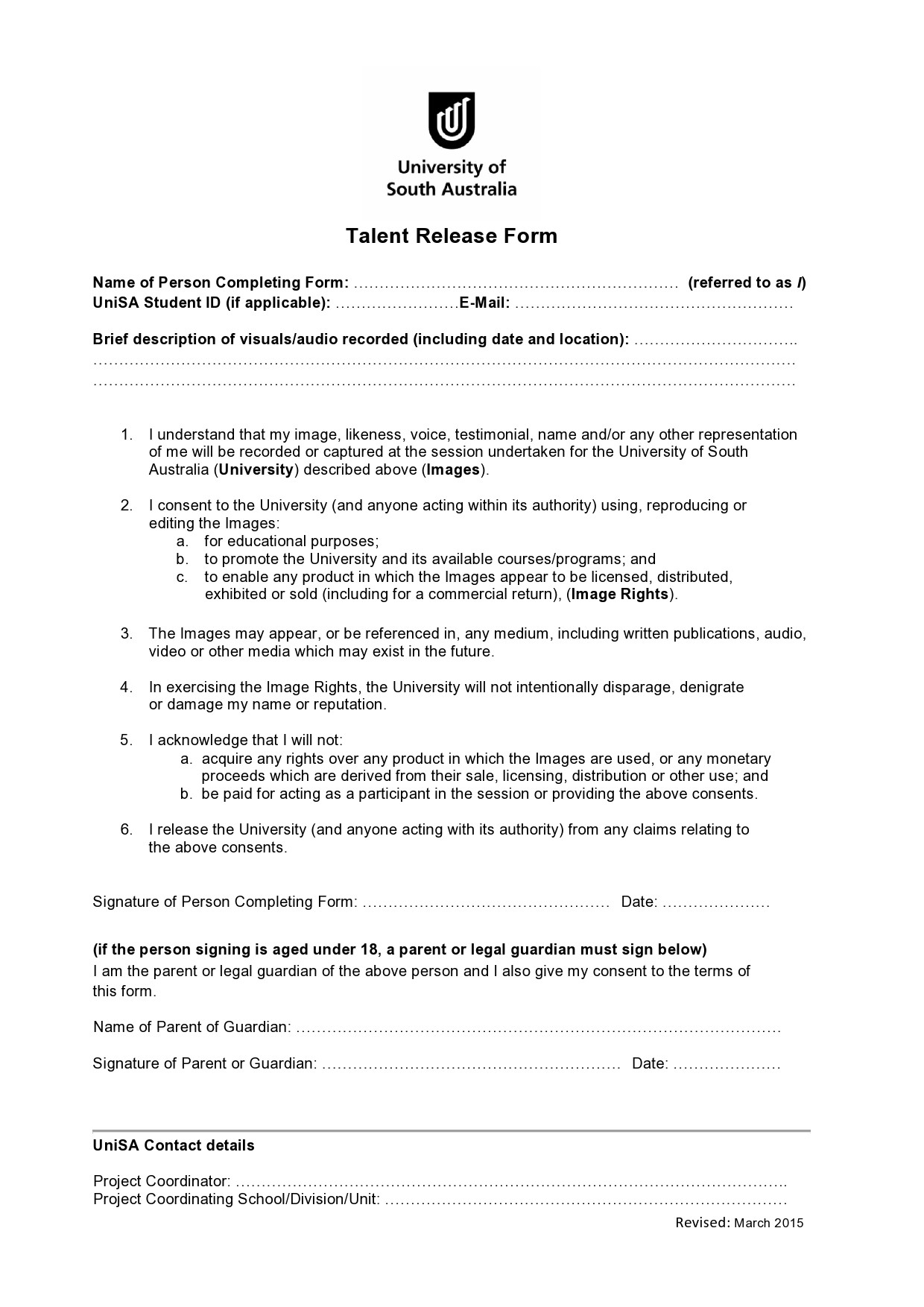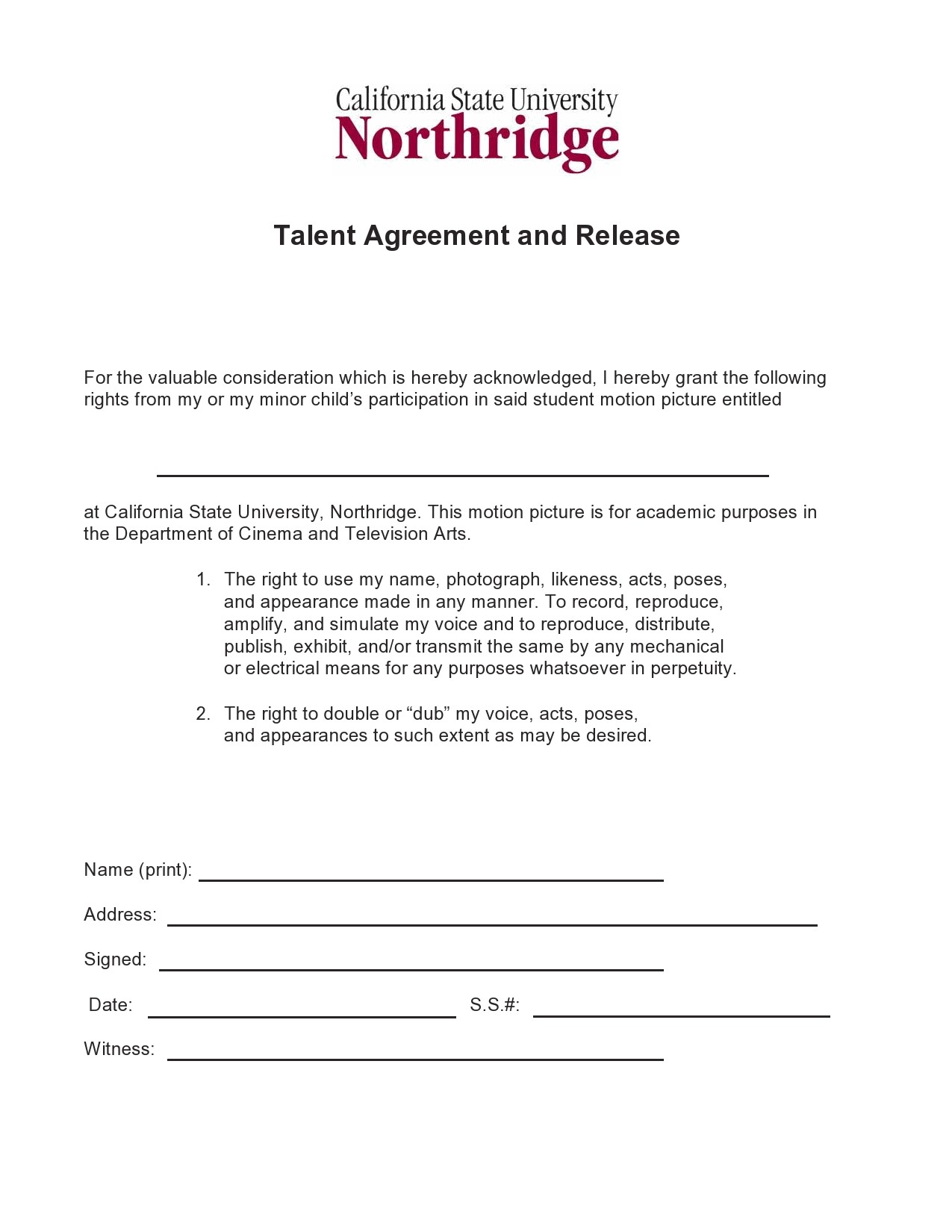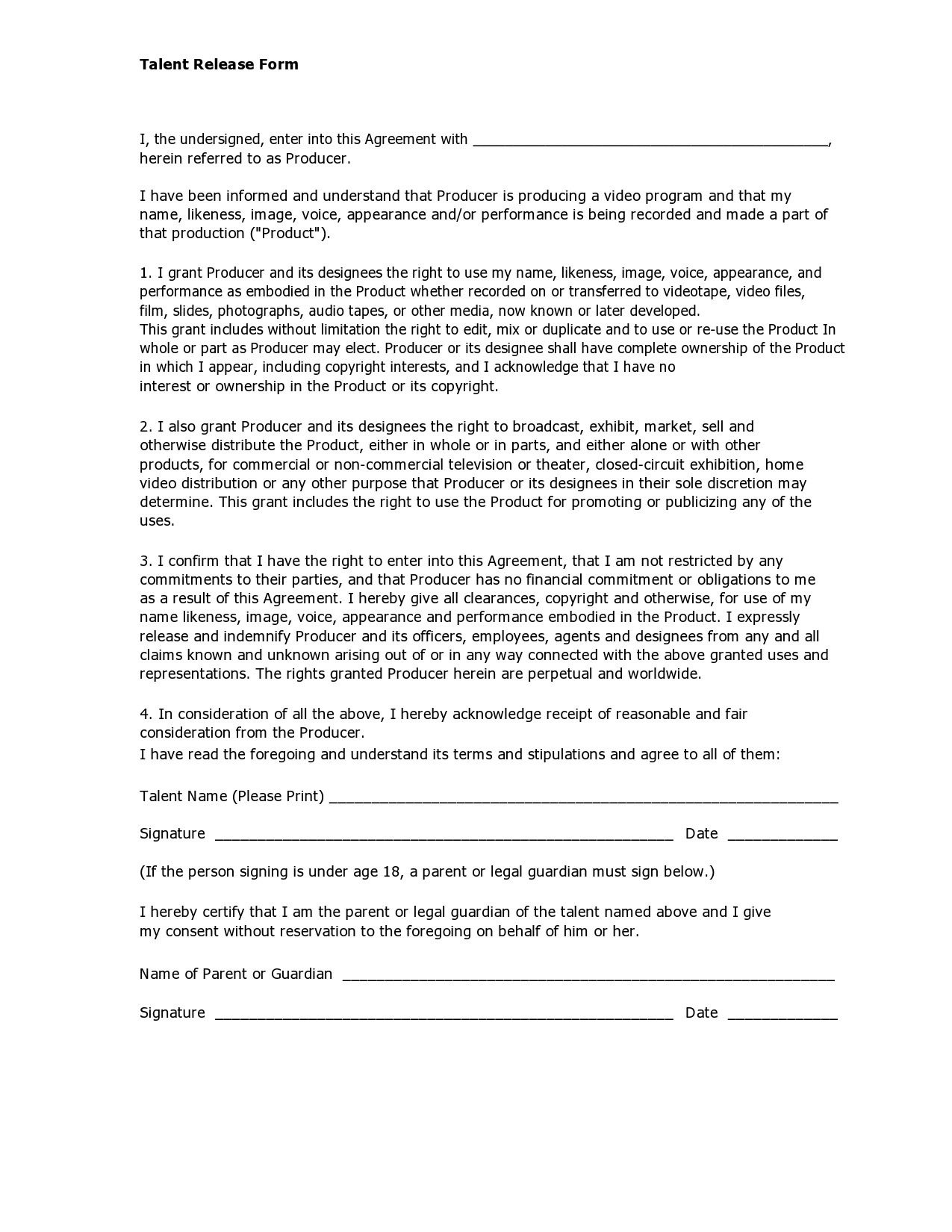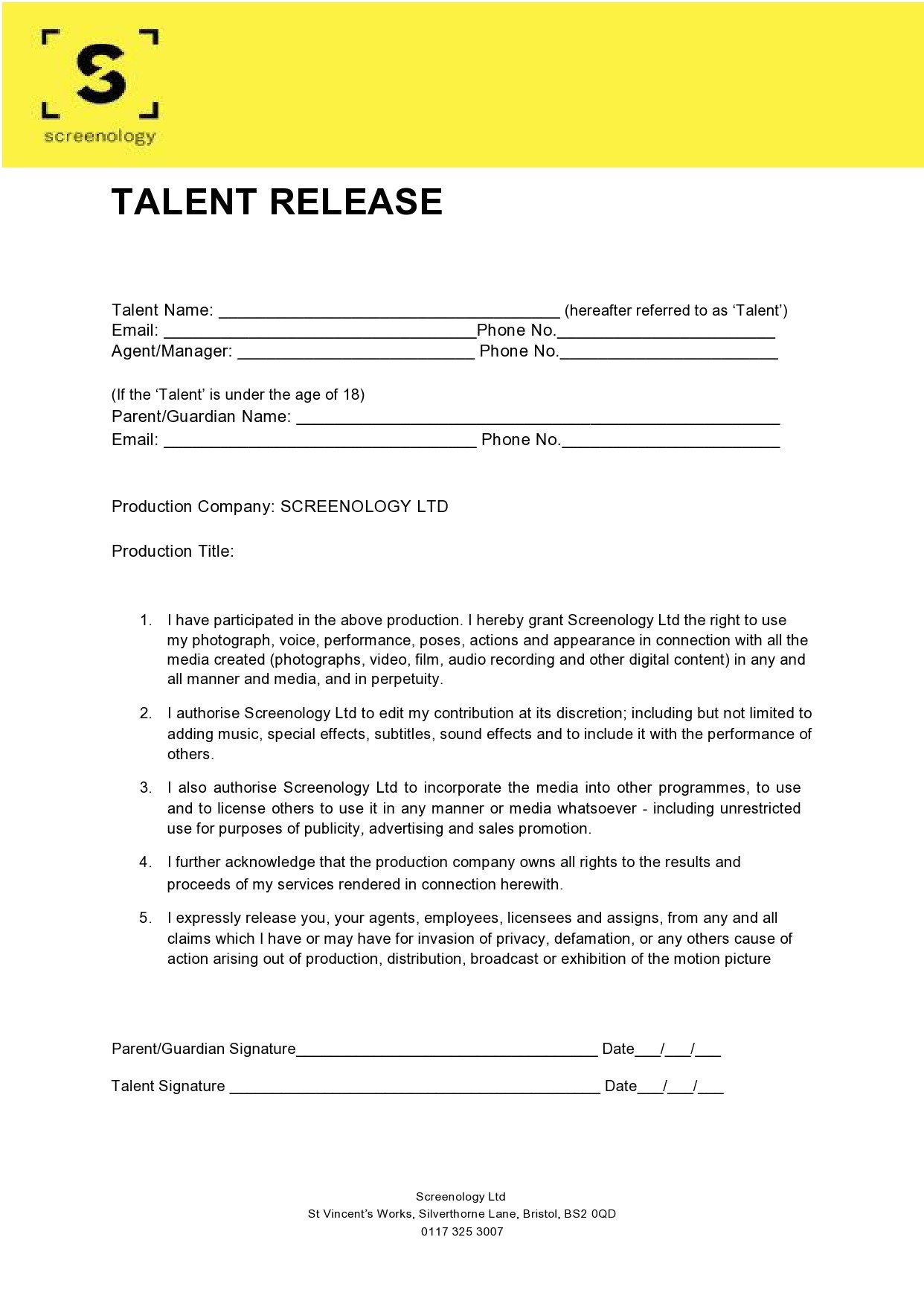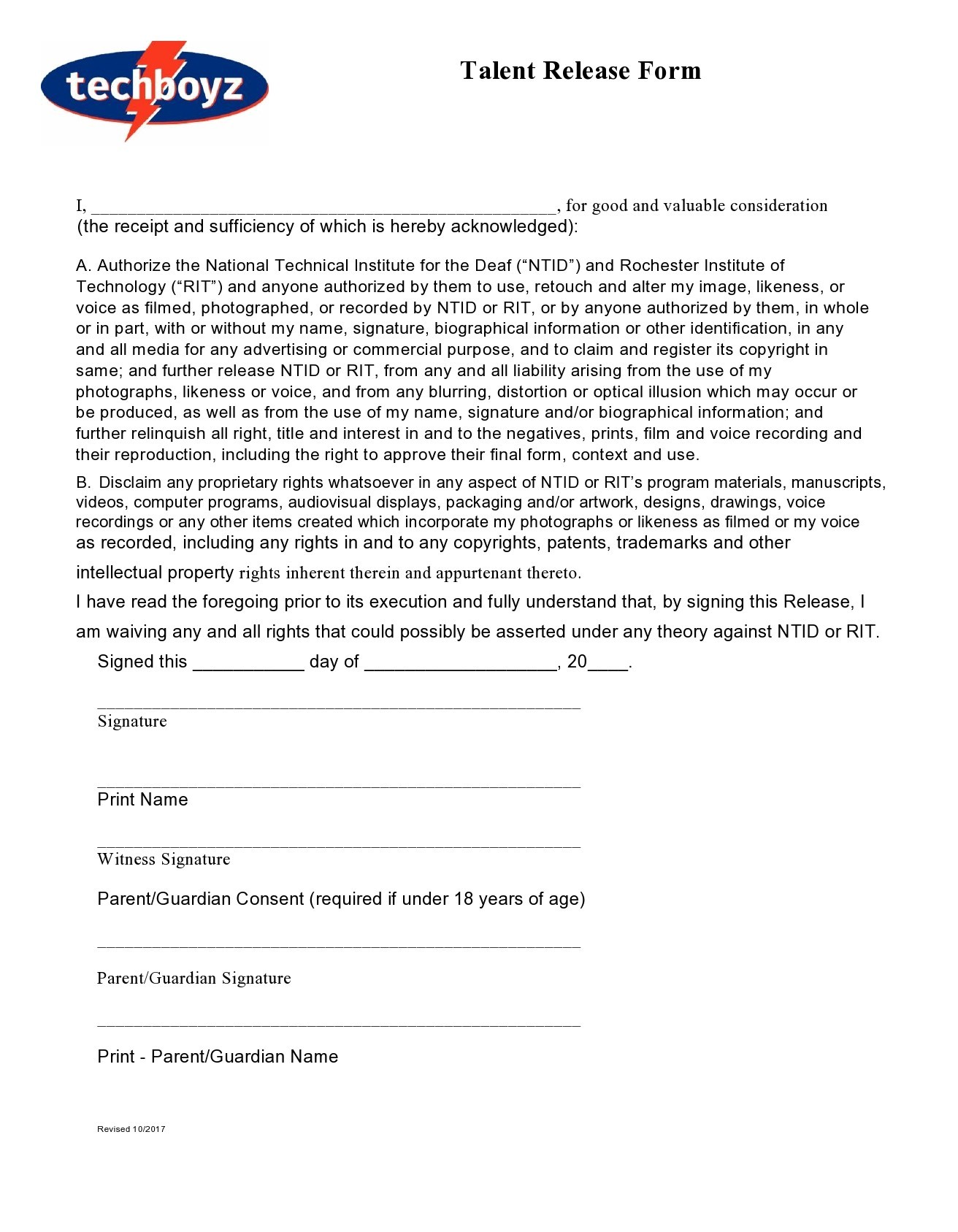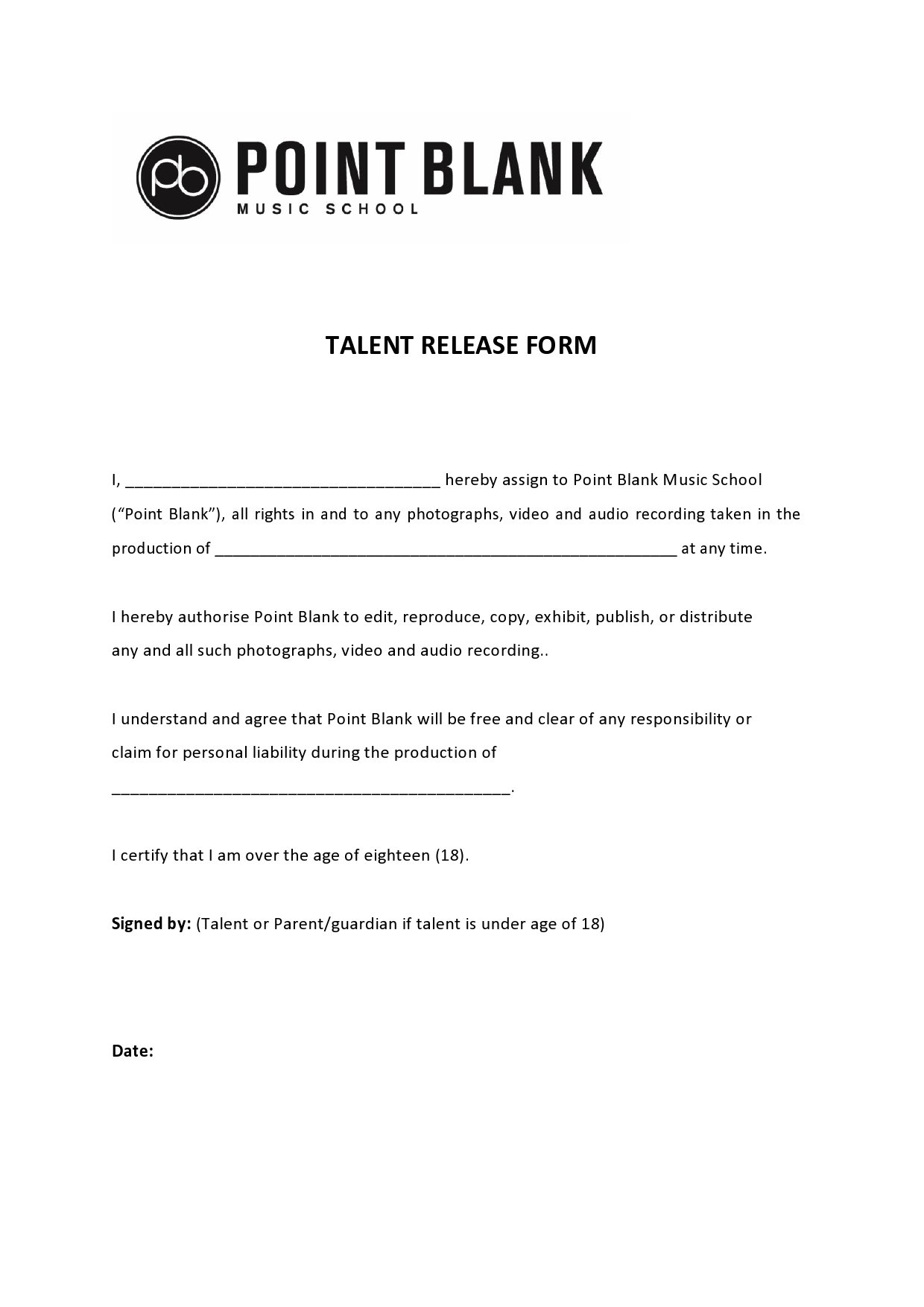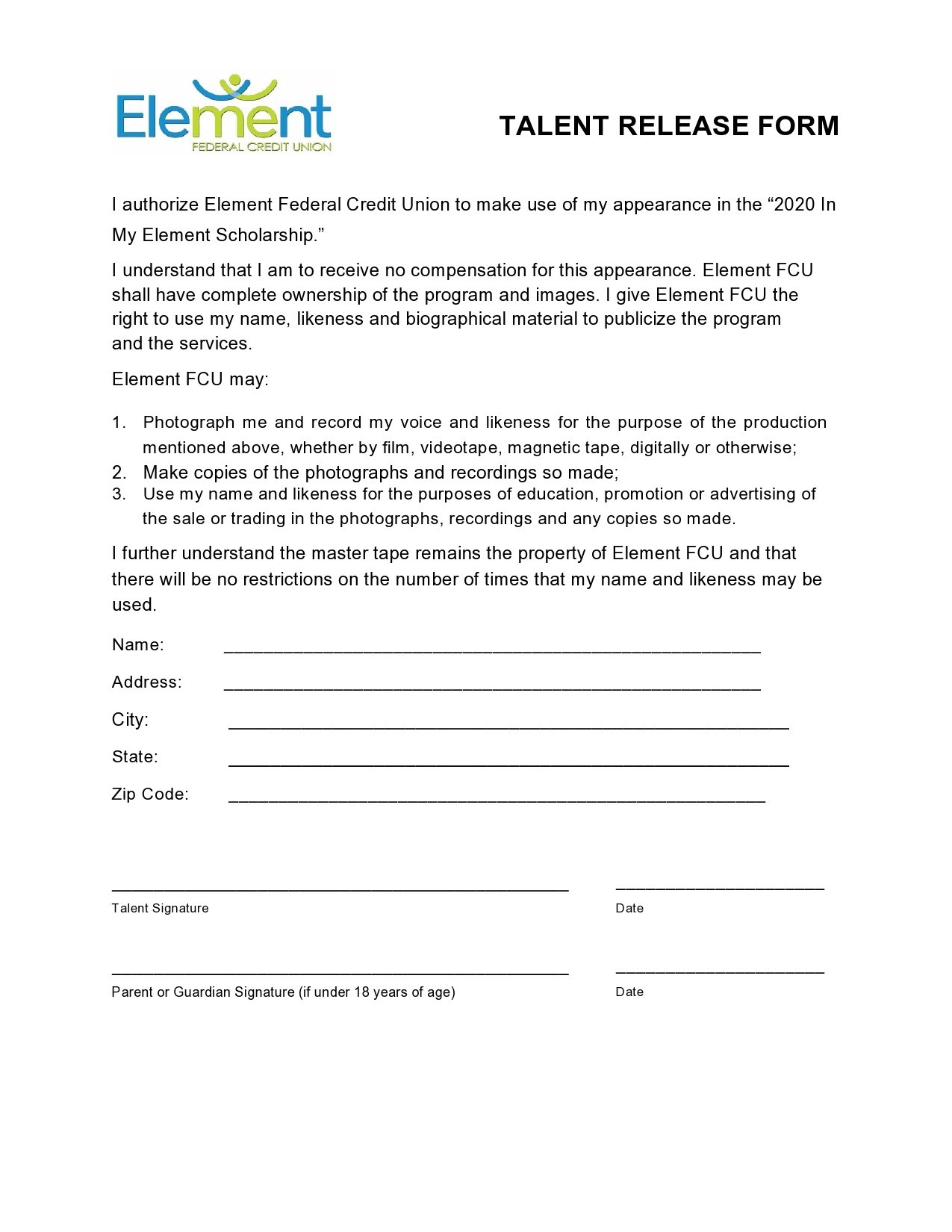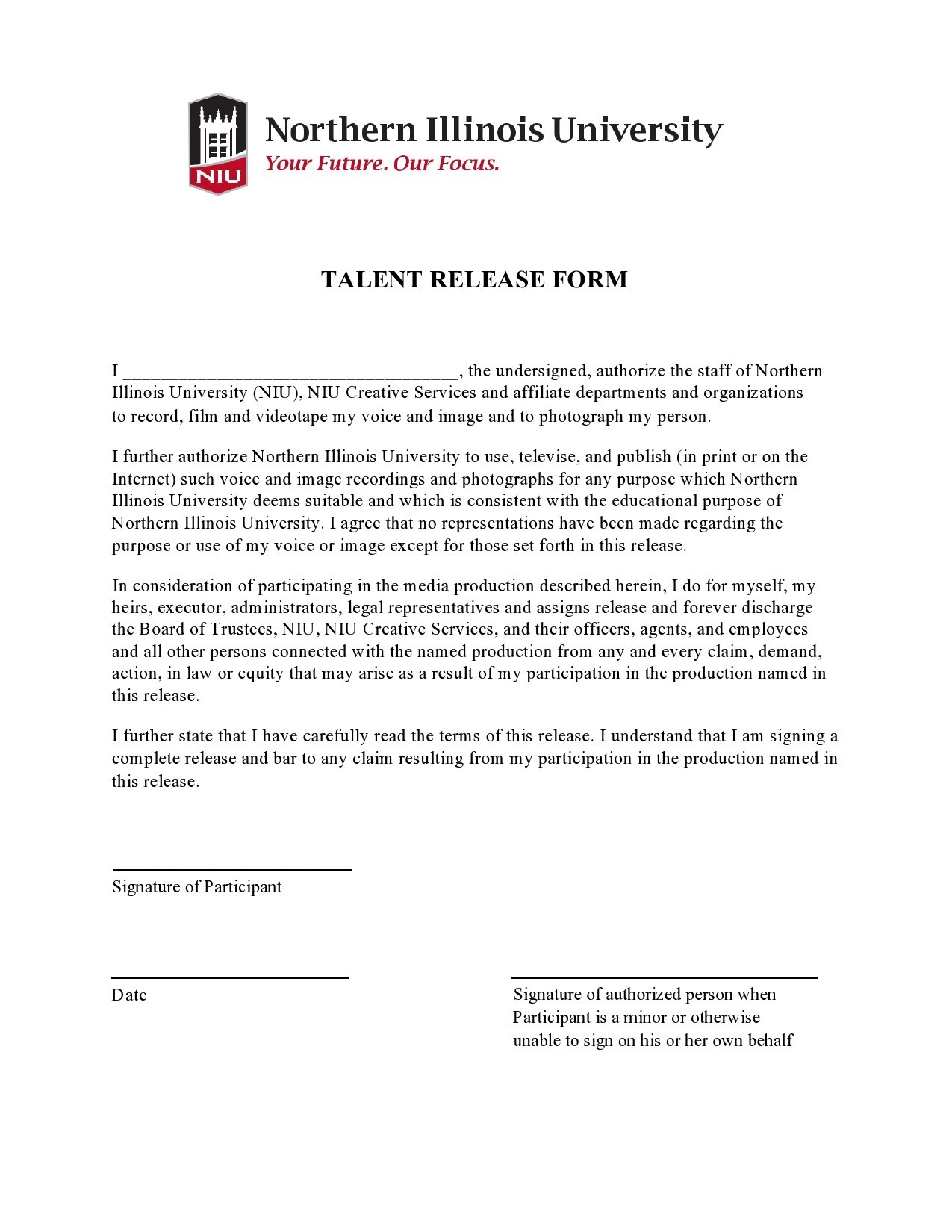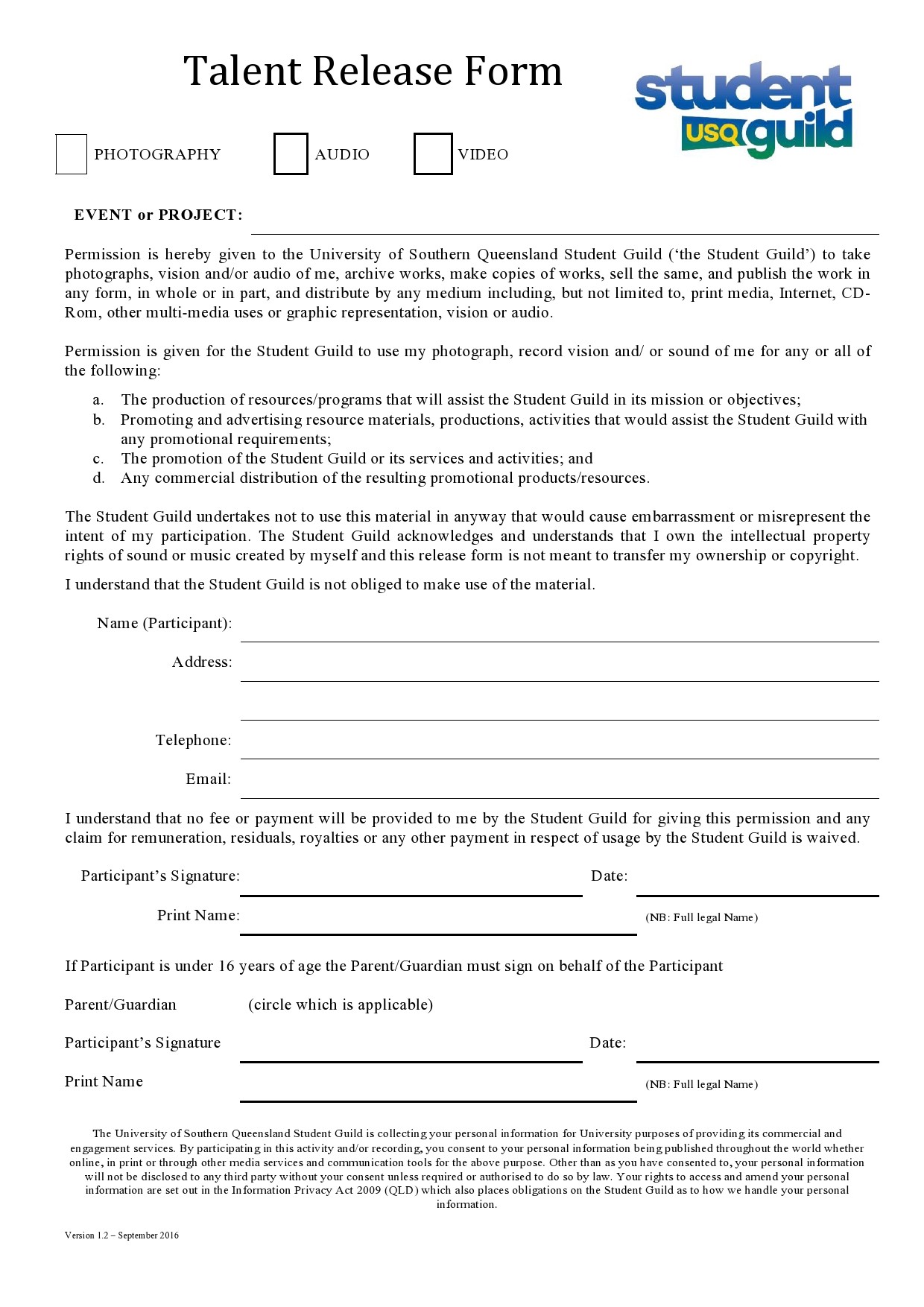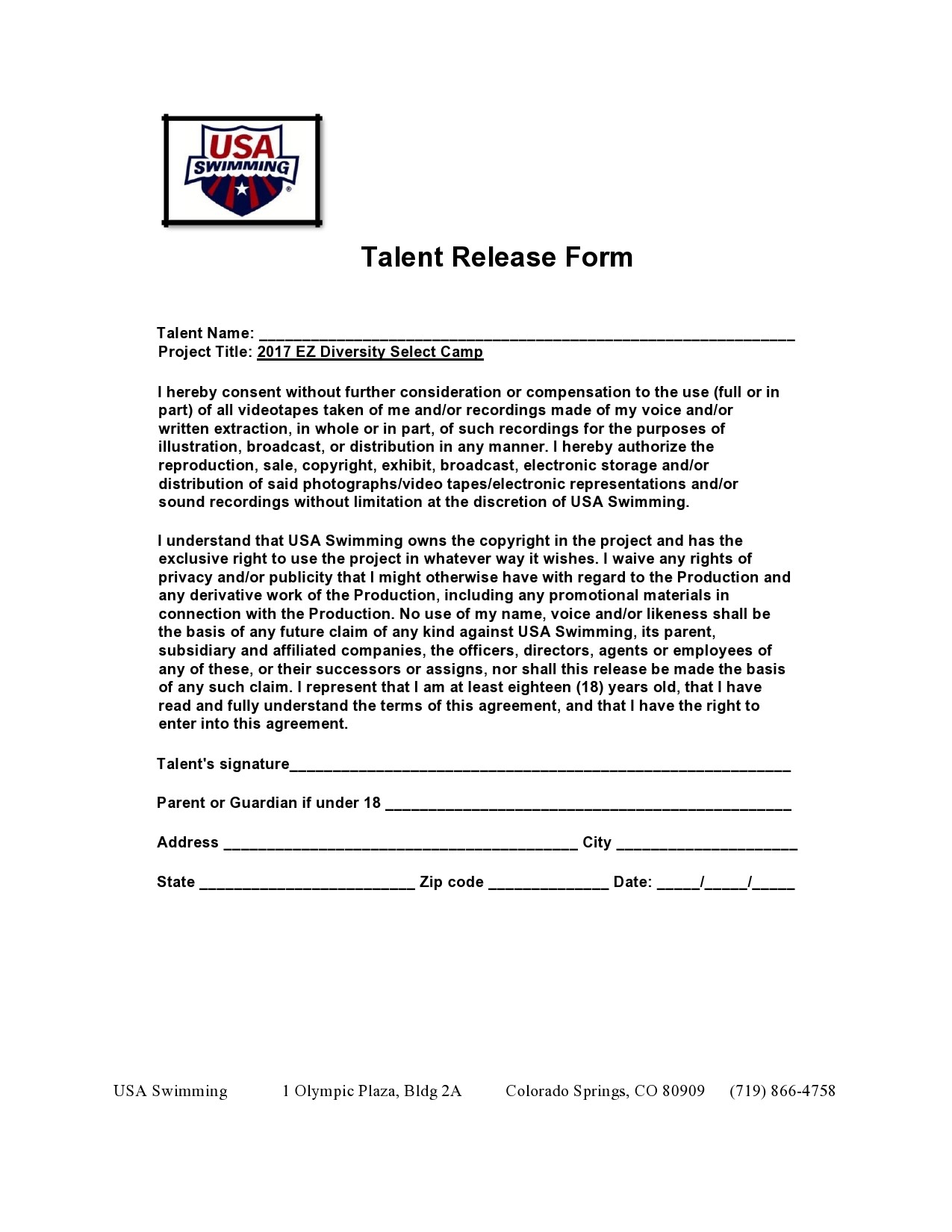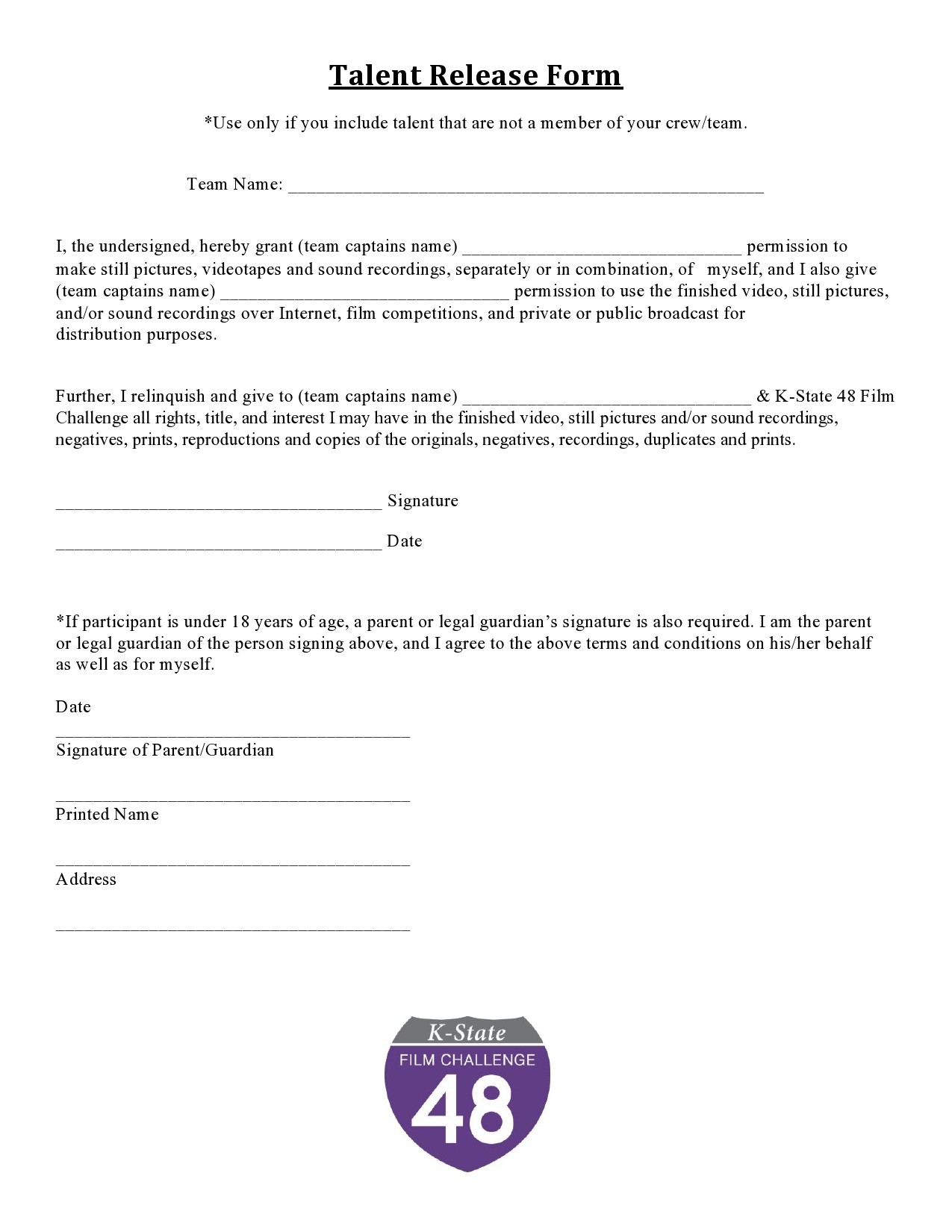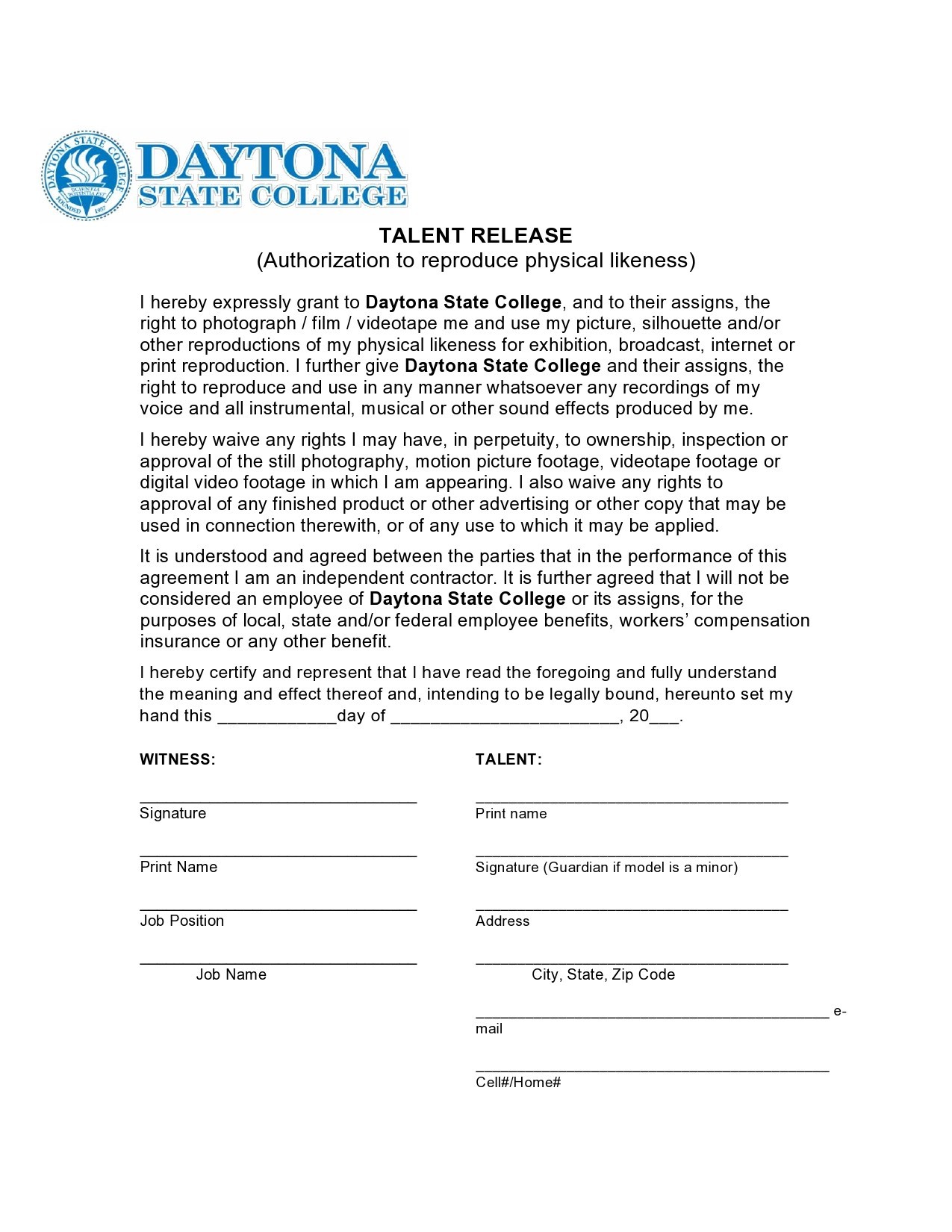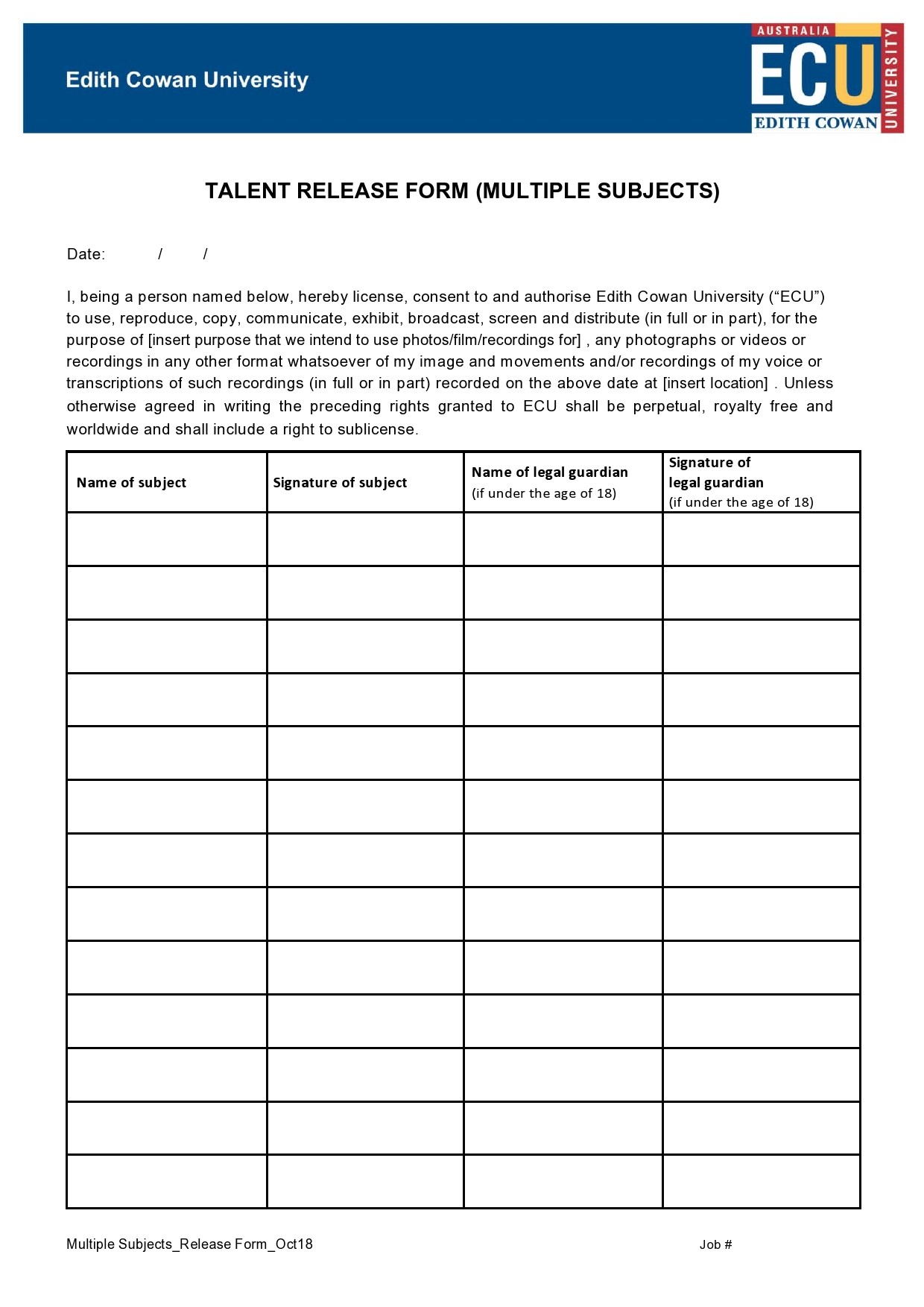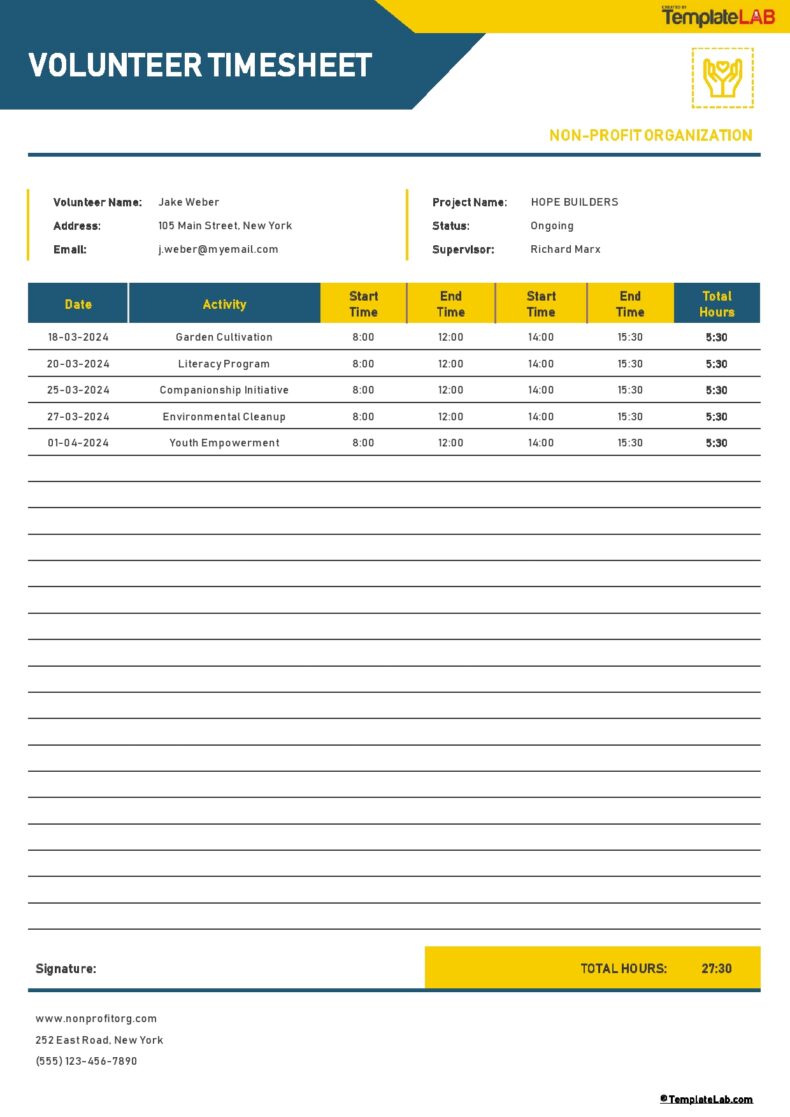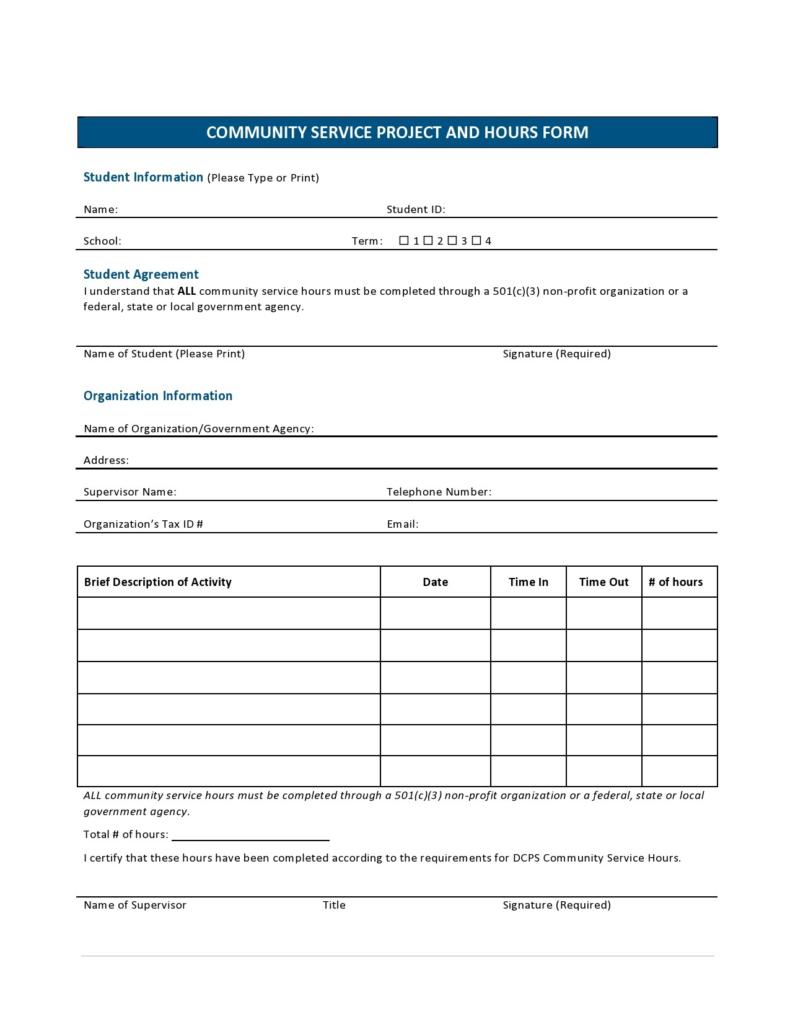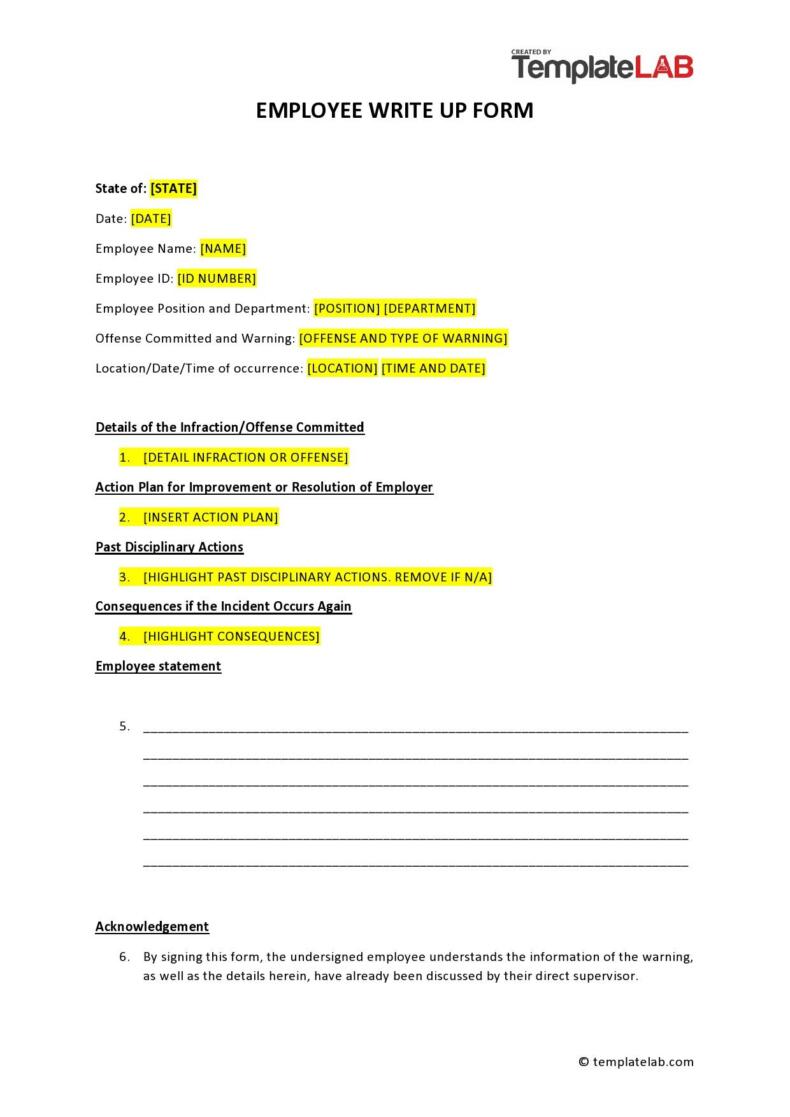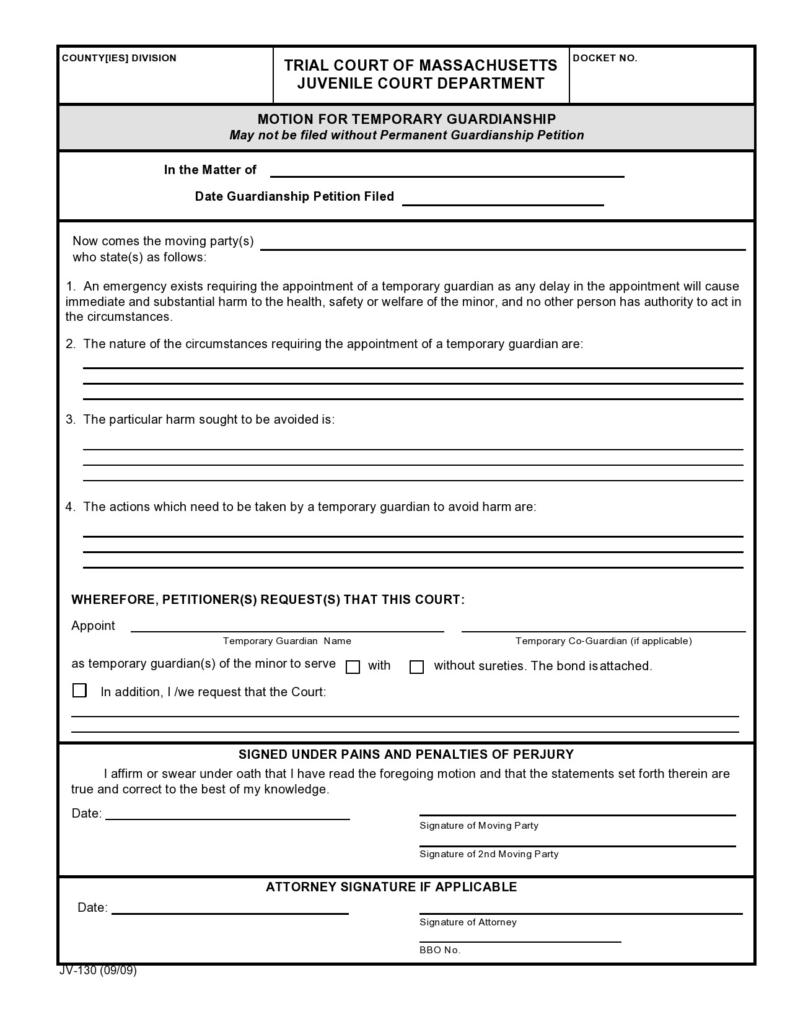People who work in the entertainment industry know the importance of a talent release form. You should always know how and when to use this as it could save you from any potential lawsuit. Whether you’re working with a crew of 5 or 500, a talent release form template is vital as it gives you legal the right to distribute the final result legally.
Table of Contents
- 1 Talent Release Forms
- 2 What is talent release form?
- 3 Actor Release Forms
- 4 What does the term “talent” mean in a form?
- 5 Film Release Form Templates
- 6 What to include in a talent release form?
- 7 Video Talent Release Forms
- 8 When and how to use a talent release form?
- 9 What is a deal memo for actors?
- 10 Video Production Release Forms
- 11 Other release forms related to a talent release form
Talent Release Forms
What is talent release form?
If you plan to record other people for films, commercials, and more, you should know when and how to use a talent release form. If you have been in the business for some time now, you would have already used a talent or film release form template as this is an important requirement. It even applies to the recording of pets and animals.
The form is an official document designed for the purpose of protecting you from lawsuits for the unauthorized usage of a video or audio recording, whether it’s visual or voiced. Although the form may sound simple, it’s part of a more comprehensive agreement. Often, though, it’s a separate document.
Actor Release Forms
What does the term “talent” mean in a form?
For the purpose of the document, “talent” here refers to whoever you’re recording, whether in photographs, audio or video. Talent can refer to people, animals, and anything or anyone else that isn’t YOU including:
- People who you talk to or interview for podcasts or videos.
- People who you film during events, on location, at tradeshows, and more.
- Actors who you film for podcasts or video shows or when you take photographs of them.
- Animals you film for podcasts or video shows or when you take photographs of them.
- Children.
- Pets.
Talent is a generic term in the industry used to refer to professional models and actors although, at times, you can also use it to refer to unpaid actors, non-professionals or animals used in still photography or videos. In the case of radio ads, podcasts, animated videos or other productions that only involve audio, the “talent” could be anybody, whether professional or not, or unpaid or paid, who will do the voice-overs or voices for your project.
Film Release Form Templates
What to include in a talent release form?
The main purpose of a talent release form is to protect you from lawsuits for unauthorized use of someone’s image or voice. The form can either be part of a longer and more comprehensive agreement or a separate legal document. A standard talent or film release form template should cover the following information:
- Name of the actor.
- Voice of the actor.
- Likeness and image of the actor. This refers to the physical appearance of the actor. The release must include not only the likeness and image of the actor in the initial work but also in all promotional materials.
- Performance of the actor. This refers to the manner by which the actor interprets the role he portrays in your production. It can also include musical choreography and performances.
Also, remember that not all video talent release forms contain images, performance, and likeness. For instance, a model release for the purpose of still photography only includes the model’s likeness and image. For voice talent release forms, these don’t include either likeness or image unless you use the still photographs or video as promotional materials.
If your talent is a professional actor, celebrity or model, the talent release form may have limitations regarding the use of the recording instead of providing broad authorization. Some talent release forms may contain extra provisions like allowing you to copyright the recording, waiving any future compensation, allowing the image of the talent to get digitally altered or allowing the utilization of the biographical information of the actor in promotional materials.
Other details and information in the form may vary, depending on the intended use and nature of the recording. Although forms are relatively short and simple, it is nevertheless important to complete for any recording to avoid any issues that may come up later when the recording gets distributed.
Video Talent Release Forms
When and how to use a talent release form?
Anytime you use talent on camera, especially if you have plans to distribute the film, make sure you also have a talent release form with you. In journalistic situations, even a simply worded statement is enough. However, with large productions or narrative films, a physical form becomes vital.
Distributors usually ask for a copy of your video production release form if you want film distribution for your film. If you do not have this, you may have to search for and get all of the actors and extras sign a copy after filming. For this reason, it’s highly recommended that you get everyone to sign the release form even before you begin.
Most talent release form templates are pretty straightforward. You only need to fill out the blank fields and take note of where to affix signatures. For talents below 18 years of age, it is either the legal guardian or parent who signs the form. Some forms cover not only production but also promotional materials.
After signing the form, it’s always recommended to make a copy for yourself and a copy for the talent. If you have a computer, scan the signed document for storage purposes. Keep in mind that even if the wordings for a talent release form may allow the use of “gotcha” style journalism, it’s always best to consult with a legal professional before you distribute content that might be later on deemed as defamation.
When you take recordings for personal use, you may not need a talent release form. However, it is always prudent to have a document prepared and signed if you think you may later display it offline, online, in public or even if you don’t use the recording commercially. In such a case, have the document signed even before production. However, there are some exemptions when it comes to talent release forms and these include:
- You cannot use the talent release form with talents under the age of 18 or minors. In such a case, the legal guardian or the parent must sign it.
- This form isn’t viable when your talent is an animal. For animals and pets, the owner of the animal should sign the release.
What is a deal memo for actors?
Deal memos which are also known as crew contracts are documents you have signed before the completion of shooting. These are usually created by the production company and it serves as the legal agreement between yourself and those who hire you.
In simpler words, a deal memo is a contract of terms between you and whoever holds the finances for the production. It addresses the common parameters that are typically used in most employments like overtime pay, day rate, if there is an inclusion of meals, and other conditions. But like everything else you put your signature on, make sure that you know what you’re getting yourself into with a deal memo and that you’re getting a good deal.
Video Production Release Forms
Aside from the basic talent release form, there are also some forms you may want to consider before filming starts. These include:
- Film notice
While shooting in a public space, there is no need for the signature of random people who would appear in the background. However, if you want to feel completely safe, it’s good to have a filming notice. With this, you can skip the paperwork by placing a large sign at your location which states that you are in the process of filming and that whoever walks in the frame agrees to be part of the film. - Minor release form
Any talent under 18 will need their parent or legal guardian’s signature on this form which they can affix at the bottom of the form. This is also included in most types of release forms found on the internet. - Location release form
You would use this form when you do filming in a private location and you need to have the owner of the property affix their signature. It is basically the same as the talent release form except that instead of the actor not getting to back out of your project, it will be the setting that you get to own the footage of.
Make sure to get all these forms ready for signing before starting your shoot. The procedures to do so are pretty straightforward but here are a few things that need to consider to make sure everybody feels comfortable with the whole process.
- Provide an explanation
Explain the need for a talent release form and why it matters. - Provide a summary
Just giving them the form and saying, “sign this” is never a good idea. Make them trust you by taking your time and introducing the form. Answer any questions they have to show them that you care about their concerns. - Be as concise as possible
Practice what you want your crew to know so you don’t take too much time when explaining. Do this your crew and talents won’t have any problem signing!

